A PLACE OF HONOR
New Jersey’s Vietnam Veterans’ Memorial and Museum



BY SAM CARCHIDI

New Jersey’s Vietnam Veterans’ Memorial and Museum



BY SAM CARCHIDI
Mike Trout, John Ruga and Tiger Woods are bringing a golf paradise to South Jersey







BY KEN DUNEK
THE GOOD NEWS is, of course, the 2024 Eagles won the Super Bowl. I am over the moon with joy and celebrate this as all Philadelphians should.
Now, here is the bad news.
I read the recent expose in the Philadelphia Inquirer on CTE (Chronic Traumatic Encephalopathy, a neurodegenerative disease linked to repeated trauma to the head), and the effect it is having on the 1980 Philadelphia Eagles.
Of course, with me being on that team it hits close to home.
My teammates are dying. Center Guy Morris, LB Frank LeMaster, Punter Max Runager (who was at my wedding in 1982), G Woody Peoples, NT Charlie Johnson, S Zac Henderson, LB Bill Bergey are all gone. Many of them suffered from CTE.
The Vermeil training camps back then were brutally tough. I lost 24 pounds in camp during my rookie year. The fortunate news for me was that the two tight ends in front of me (Keith Krepfle and John Spagnola) got hurt in camp, which gave me the opportunity to play, but I also had to run scout team for the first team defense. So, I was running double duty and happy to have the opportunity.
The two-a-days and three-and-a-half-hour sessions took their toll on all of us.
I am not blaming Coach Vermeil at all. That was just the way it was back then.
And we knew what we were signing up for. His tough sessions made us NFC Champions, and I cherish the ring I wear to this day and wear it with pride.
The practices also taught me some valuable lessons about life, teamwork, and perseverance. The way I figured it, if I could make it through that camp and make that team, I could do just about anything.
I love NFL football. But it is a behemoth that has almost unlimited funds.
My teammates who are still alive and have asked the NFL for help like OT Jerry Sisemore and LB John Bunting shouldn’t be given the runaround when they need assistance.
They paid the price, now it’s time for the NFL to pay them, and any player suffering now for their sacrifice.

Ken Dunek PUBLISHER
ASSOCIATE PUBLISHER
Ashley Dunek
EDITOR
George Brinkerhoff
ART DIRECTOR
Steve Iannarelli
CONTRIBUTING WRITERS
George Anastasia, George Brinkerhoff, Sam Carchidi, Alexandra Dunek, Mark Eckel, Beau Gaurino, Dei Lynam, Anthony Mongeluzo, Kevin Reilly, Mike Shute, Kurt Smith , Pat Julian Vellucci
Event Coordinator & Administrative Assistant
Alexandra Dunek
Website & Digital Coordinator
Jamie Dunek
Editorial gbrinkerhoff@jerseymanmagazine.com
Advertising 856-912-4007
Printing Alcom Printing, Harleysville, Pa.
Controller
Rose M. Balcavage
Sales Associates
Ashley Dunek, Jamie Dunek, Terri Dunek, JP Lutz
JerseyMan/PhillyMan Advisory Board
Peter Cordua (Chairman) ..........Cordua Consulting, LLC
Don Eichman .............................. Alcom Printing Bill Emerson Emerson Group
Jerry Flanagan J Dog Brands
Damien Ghee
Bob Hoey Janney Montgomery Scott Kristi Howell Burlington Co. Chamber of Commerce
Ed Hutchinson ................................ Hutchinson
Robert Kennedy ................... Waterworks Metrology
“We knew what we were signing up for.”
Anthony Mongeluzo .................................. PCS
Charlie Muracco
Ryan Regina
Joe Tredinnick
“Play this game like the 8-year-old you used to be, dreaming to play in the show. Heart, passion, and fire! Remember where you came from.”
– Bryce Harper




“I
– Mike Schmidt


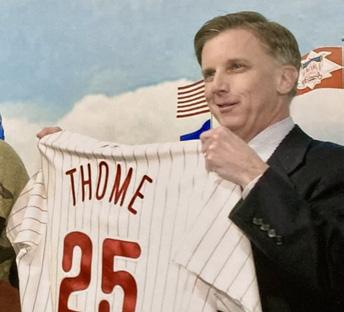
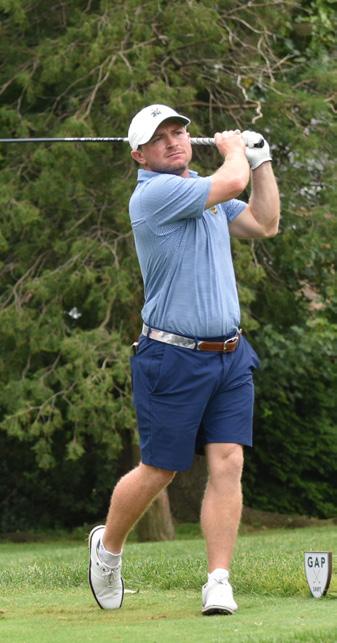

BY GEORGE BRINKERHOFF
“Competing at the highest level is not about winning. It’s about preparation, courage, understanding, and nurturing your people, and heart. Winning is the result.”
– Joe Torre
IT’S A REMARKABLY CLEVER IDEA and has become one of the ultimate premium gifts for the sports fan or corporate customer: make a drinking mug out of the barrel of a baseball bat. Randall Thompson’s baseball playing career extended from little league to college to being a professional in the minors, and when his playing career ended with the Toronto Blue Jays organization, he then took a position as college baseball coach. It was here, as he watched a fellow coach cut the top of a bat off, letting the players use the handle in a drill to “focus on the hands,” that he caught lightning in a bottle. Randall noticed the top-end of the barrel, left sitting on the bench, and the thought struck him: “I could definitely drink from a bat!” That’s how it started. Yet he wouldn’t revisit and realize this vision until a few years and several more career changes later.
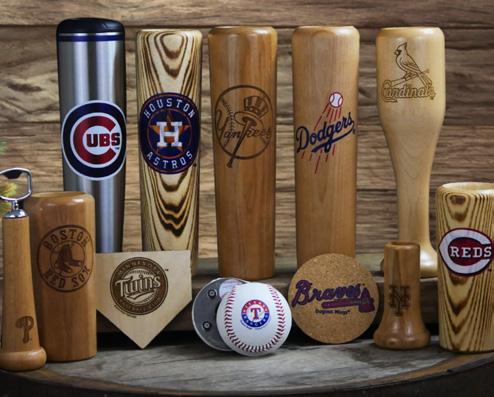
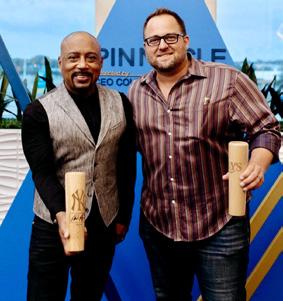
Dugout Mugs is the aptly named company that makes the patented drinking vessels which Randall helped form, joining forces with CEO and Co-Founder Kris Dehnert, a business visionary. Dugout Mugs has gone from a company making a million dollars in annual sales to capturing $50 million in sales since 2017. That kind of growth gets noticed. So

Morning, The View, The Today Show and others.
After forming their company to develop and market their flagship product, they’ve expanded by having their products officially licensed with both Major League Baseball and Minor League Baseball, the MLB Players Association and the National Baseball Hall of Fame, which allows them to use team and league marks on their products. The company now makes baseball bat mugs of every kind, including aluminum and stainless-steel mugs, with team logos emblazoned, and they make an entire universe of themed products. They have the MLB Board Game Collection, the Patriotic Collection, Father’s Day and Mother’s Day Collections, even mugs with a Valentine’s Day theme. They also have a custom shop which enables customers to personalize their own baseball mugs with everything from photos to messages and/or add their own corporate, team or custom logos. Dugout Mugs have branched out with other sports related items including baseball bat shot glasses from bat handles, personalized “Wined Up” wine goblets fashioned from bat barrels, wooden home plate drink coasters, Dugout Mug metal lids, Christmas tree ornaments, baseball seam art (with necklaces, bracelets, pendants, earrings, cufflinks, keychains and magnets), and baseball themed bottle openers and board games. They also have baseball themed grilling utensils, drawstring bags, a Dugout Mug trucker’s hat and even some golf themed bottle openers and cigar holders for golf enthusiasts! You can even purchase wholesale for your next corporate event or fundraiser. Their products are currently available in all 30 Major league ballparks and almost 50 Minor league ballparks as well as 500 retail locations nationwide.
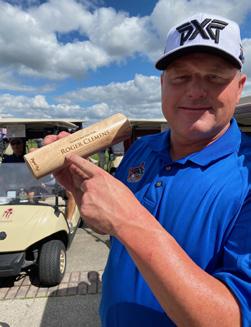
For more information and to check out their products go to dugoutmugs.com
You remember them, right? The Saint Joseph Hawks basketball team, circa 2003-2004 and their unbelievable rise to the No. 1 seed in the country? Even a casual observer, if he or she was anywhere near Philadelphia that year and had a pulse, recalls those special times and the improbable journey that the hometown team took us on. In A Soaring Season: The Incredible, Inspiring Story of the 2003-2004 Saint Joseph’s Hawks , author Aaron Bracy takes us back, vividly, through that amazing run. Well-researched, with Bracy conducting over 100 interviews of the people involved, it tells the complete tale of this unlikely team and what they accomplished. Their march to the top became the marquee story of the season that year, throughout the region and the nation. A Soaring Season documents the Hawks meteoric rise from their humble origins. As Bracy tells it, “With an underrecruited team, an underfunded program, housed in underwhelming facilities, everything about this mom-and-pop operation felt small-time—everything, that is, except the team, which rose to be unanimously ranked No. 1 in the country after finishing 27-0 in the regular season.”

Bracy (left) believes their story captures some of the best of our humanity and offers timeless insights for today’s generation and beyond. “This is a story about a sports team that transcends sports. It is a story for everyone about the power of the human spirit and the long odds people can overcome when they work hard, work together, and believe in themselves. The story resonated 21 years ago with people who loved sports, casual fans, and those who cared little about sports and, I believe, it will again today.”
Though newly published earlier this year, some area icons have already weighed in.
Local sports news anchor and reporter for NBC Sports Philadelphia Michael Barkann indicated, “Aaron Bracy soars with this epic.”
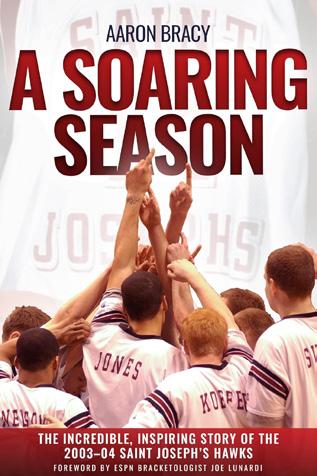
said, “What it does leave you with is a feeling of inspiration.”
Dan Baker, the longtime voice of the Phillies and Eagles as the public address announcer at Veterans Stadium, Lincoln Financial Field and Citizens Bank Park commented: “Masterfully detailed. You can’t put it down once you pick it up.”
Other early reviews are in, too, full of praise with verbiage such as “outstanding” “terrific” “extremely detailed” “vivid” “timeless” and “excellent.” It looks as though Aaron Bracy ‘s new retelling of that magical season is, much like the 2003-2004 Saint Joseph Hawks themselves, a clear winner.
Digital or hardcover versions of A Soaring Season: The Incredible, Inspiring Story of the 2003-2004 Saint Joseph’s Hawks are available at Amazon.com, on the author’s website, www. big5hoops.com/asoaringseason, or the publisher’s website: www.brooklinebooks.com.


Ever wonder what specific names should be used when referring to groupings or pluralities of specific animals? Well, wonder no more. Here are a few colorful, singularly descriptive names for different animals en masse. You’re welcome.
A CARAVAN OF CAMELS
A QUIVER OF COBRAS
A BUSINESS OF FERRETS
A CONSPIRACY OF LEMURS
A LEAP OF LEOPARDS
A LABOR OF MOLES
A PANDEMONIUM OF PARROTS
A PRICKLE OF PORCUPINES
A CRASH OF RHINOCEROSES
A WISDOM OF WOMBATS
A ZEAL OF ZEBRAS

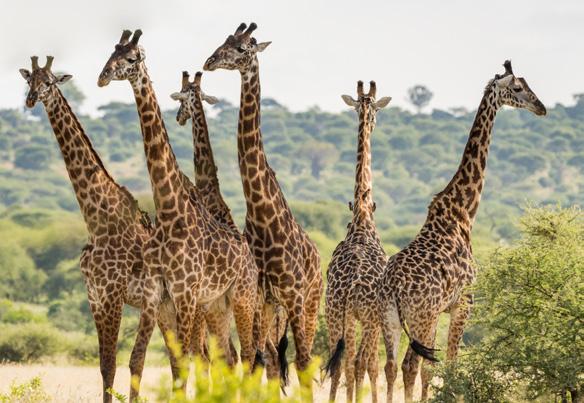



Source: https://arapahoelibraries.org/blogs/post/names-for-groups-of-animals

it’s delicious. La Liegeoise (Nope, my pronunciation would be laughable. But I can say, “Waffle.”) makes anytime (read “not-just-for-breakfast”) Belgian waffles that you eat with your hands. Called Liege waffles, they are a Belgian street food. They’re not made with batter, like the Brussels-style waffle we’re accustomed to in the USA. Rather they’re thicker “brioche-like vanilla waffles made from yeast dough infused with Belgian pearl sugars that caramelize into a crispy coating with a soft and dense interior” that you can eat plain, as is the Liege tradition. However, just in case you want to take it to the next level, you have that option, and can top your waffle with fruit, ice cream, even Nutella (mmm, Nutella). You can even order waffle sandwiches, waffle hot dogs and waffle tapas, which are mini waffles with savory toppings. What can’t Liege waffles do?
Check them out on Route 70 in Cherry Hill, NJ, in the Heritage Square Shopping Center, 1871 Marlton Pike East, Suite 8.


Ladies of Legacy “Poses & Prosecco” Happy Hour – Colette Oswald Photography, Audubon

Referral Partner Party
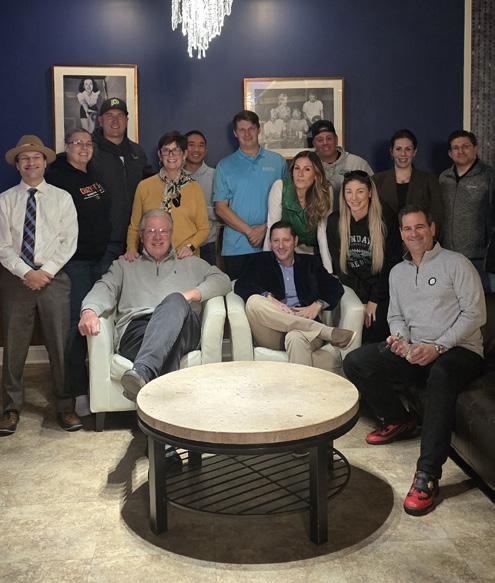
Chairman’s Club Dinner
Eddie V’s Seafood, Cherry Hill
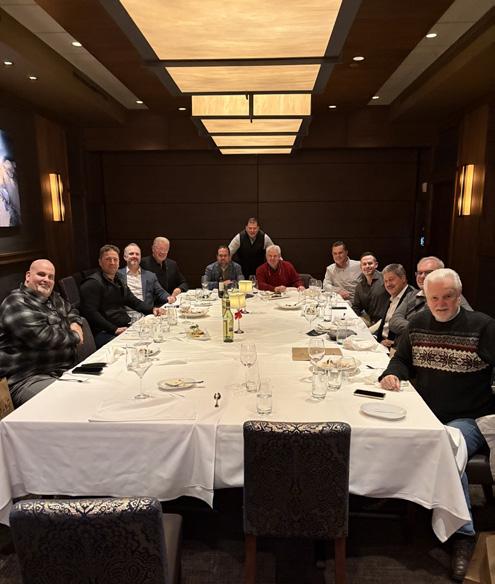
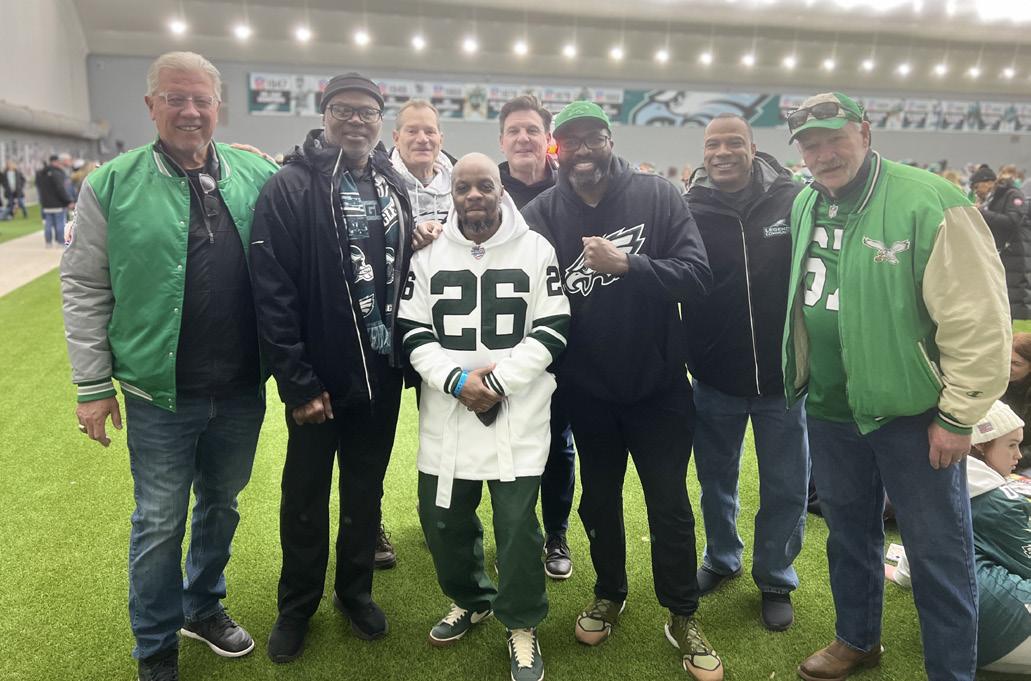
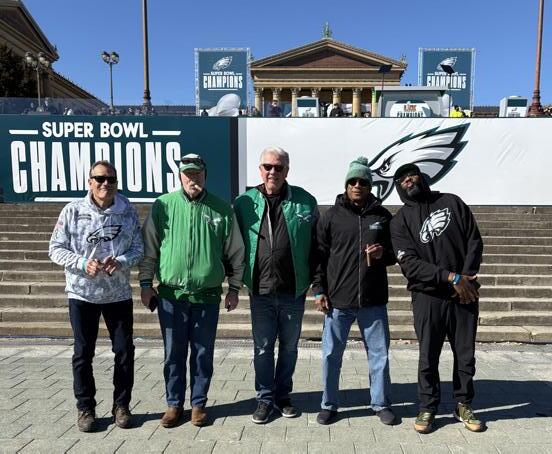

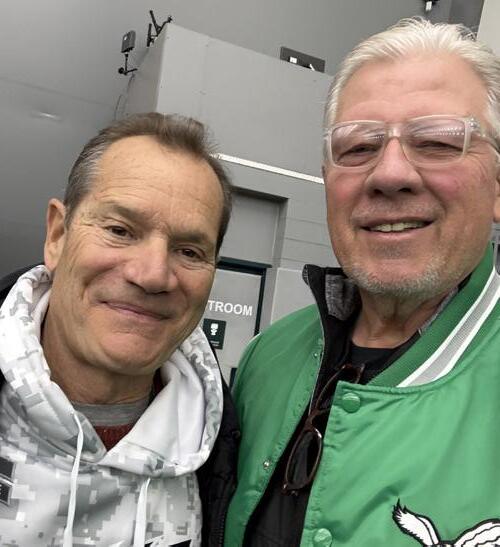

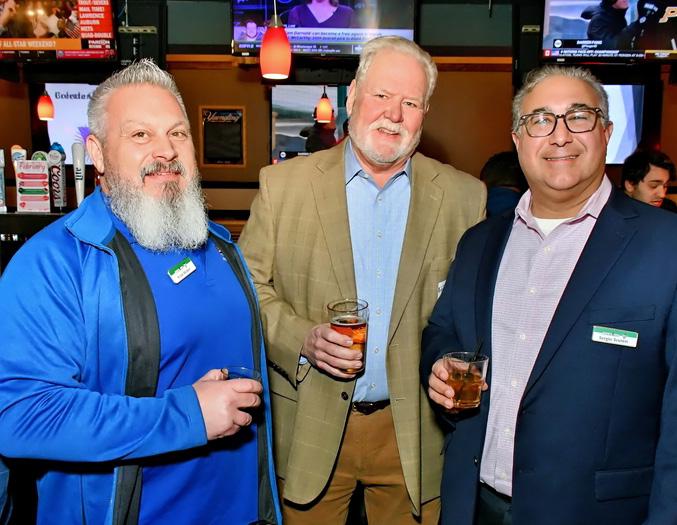
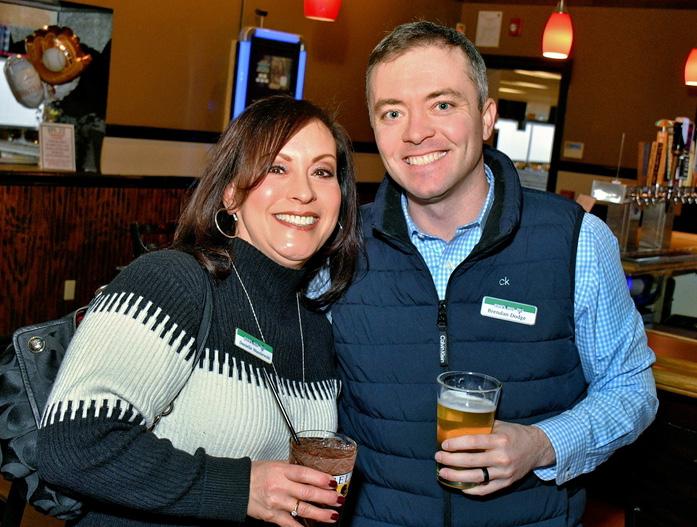
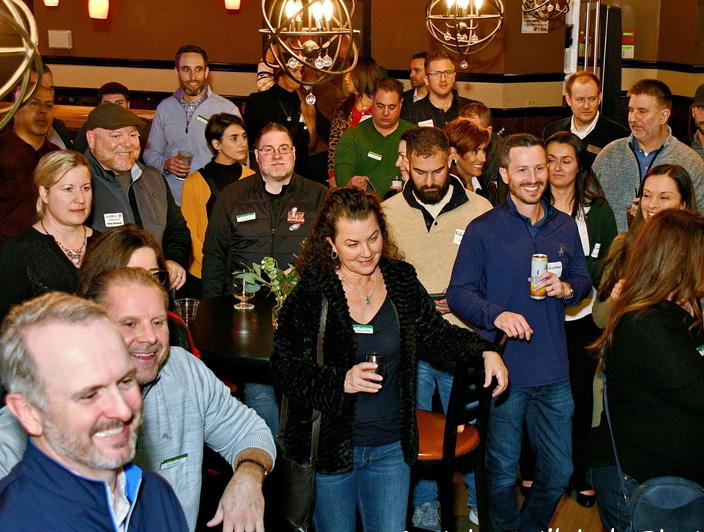



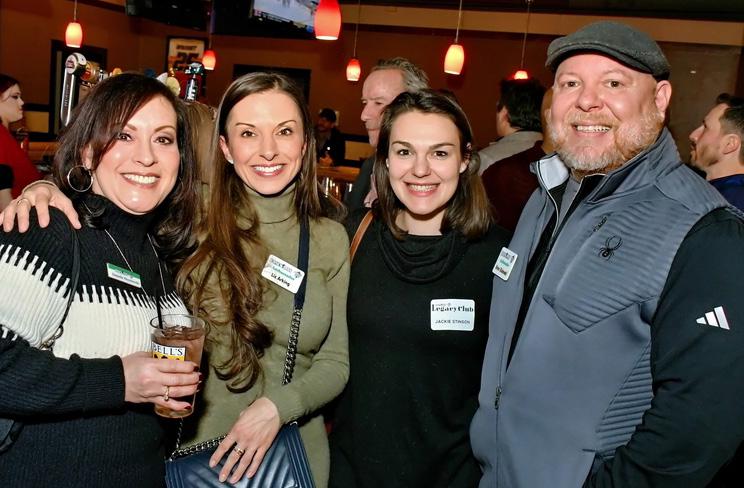
Photography
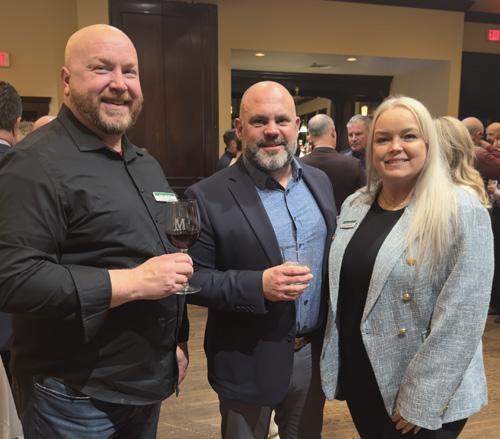


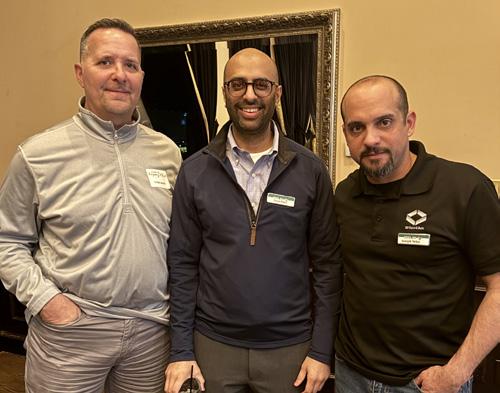
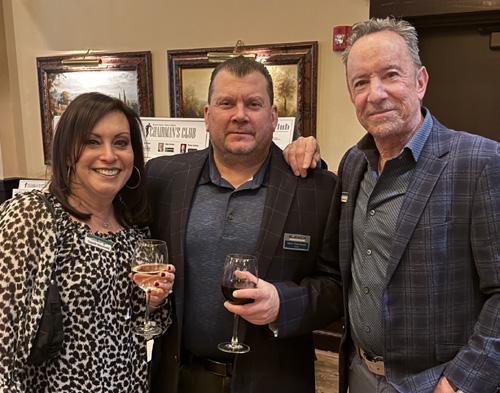

Photography by Jamie Dunek
Instagram: @birdwatchphilly

“I had a feeling the Eagles could win the Super Bowl and thought it would be cool to document it in real time. This project was dedicated to showcasing the fans in Philadelphia during the championship run. Go Birds! Congrats to our Super Bowl Champs.” –J.D.






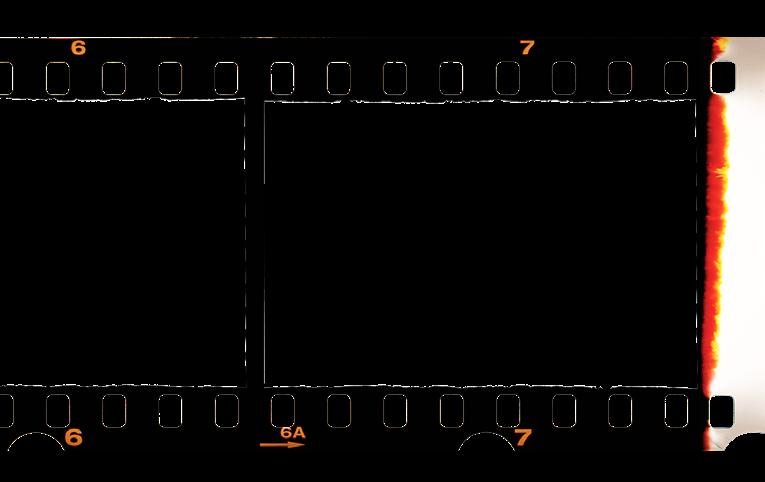


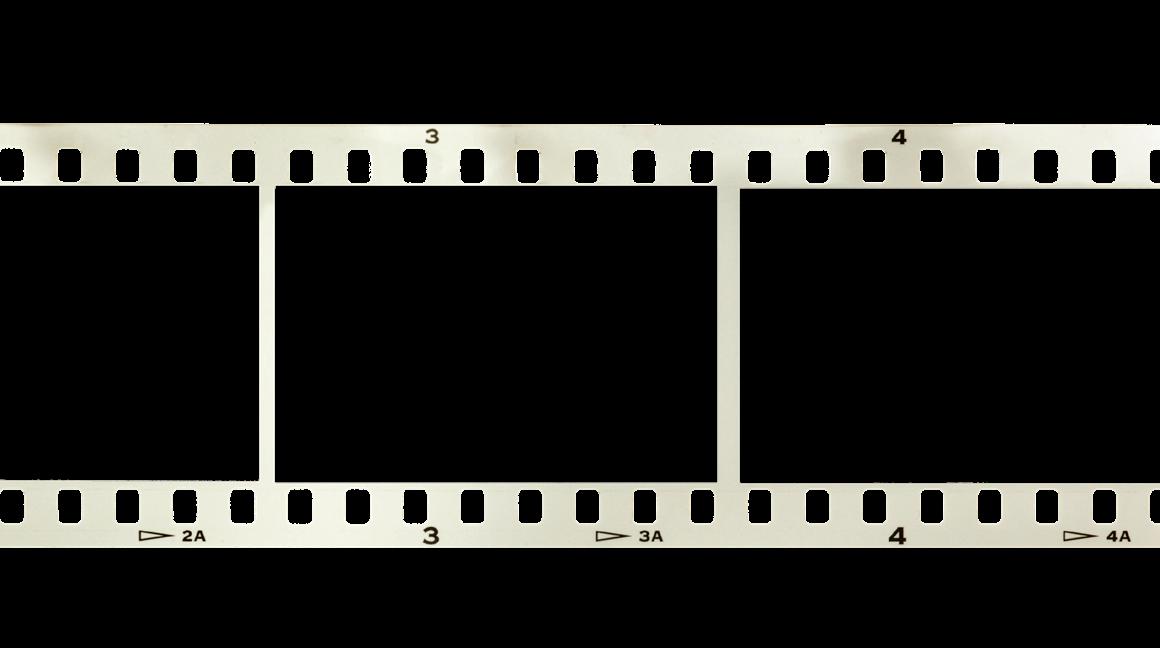

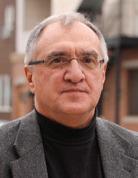
BY GEORGE ANASTASIA
FORTY-FIVE YEARS AGO this month, Philadelphia mob boss
Angelo Bruno was killed. The local crime family has never recovered.
Bruno was smoking a cigarette as he sat in the passenger seat of his car parked in front of his row home just off the corner of 10th Street and Snyder Avenue in South Philadelphia. It was a rainy Friday night, March 21, 1980. Bruno had had dinner at Cous Little Italy, a favorite restaurant, earlier that evening. He had the chicken Sicilian, chicken breasts swimming in a spicy blend of olive oil, peppers, mushrooms and olives. It would be his last supper.
He was then driven home by a newcomer to his organization, a Sicilian named John Stanfa who had come to Philadelphia several years earlier with a letter of introduction from Bruno’s good friend Carlo Gambino, the powerful New York mob boss.
Gambino died of natural causes in 1975. Bruno wouldn’t be as fortunate.
As Bruno smoked, Stanfa pushed the remote-control button, lowering the passenger side window. To this day there is uncertainty about the significance of that move. To those who believe that Stanfa was part of the conspiracy to kill Bruno (something Stanfa has always denied) lowering the window literally opened the way for what happened next. For those who say Stanfa was not involved, it was simply a move to allow the smoke from the cigarette to drift out of the parked car, a random act that took on significance because of what happened next.
It was shortly before 10 p.m. As the mob boss savored his cigarette, a man wearing a raincoat stepped out of the shadows just off the corner and approached the car from the rear. When he reached the open window, he pulled a shotgun out from under his coat, leveled it at the back of Bruno’s head and fired. Bruno died instantly.
But what has lived on is an image of the mob boss – The Gentle Don, the Docile Don. And that, it should be noted as we look back on history, has very little to do with reality. Bruno was, indeed, a gentleman. And those who knew and dealt with him in the neighborhood saw him as an avuncular, almost benign crime boss.
That was the soft image he projected, a curtain that hid a gangster.
BRUNO GOT HIS START as a young man in the bootlegging business at the end of Prohibition and then moved up the ladder in what the FBI – long before political correctness had taken hold – referred to as the “Greaser Gang.” This was a group of Italian immigrants, primarily from Sicily, Calabria and
suspect in at least one gangland murder. This was back in 1954. The victim was described by federal investigators as a fellow bootlegger who had been running illegal stills in the Philadelphia area for years but, suspiciously, had never been arrested. Those in the underworld suspected he was a cooperator and Bruno, an up-and-comer at the time, was assigned the hit. The bootlegger’s body was later discovered in the trunk of a car parked on a South Philadelphia street He had been shot to death. Subsequent FBI reports on Bruno included the warning that he was considered “armed and dangerous.” Hardly the Docile Don, but that is the image that has persisted through the years. So had the misconception that Bruno wanted nothing to do with drug dealing.
Bruno was also a prolific money-maker, generating tens of thousands of dollars through the numbers racket, bookmaking, loansharking and the vending machine business. But there was another side of him.
Abruzzo, who were part of the Philadelphia underworld, an underworld dominated at the time by Jewish gangsters like Willie Weisberg and Harry Stromberg.
Bruno saw the advantage of aligning with those in power and eventually used his connections both with the Jewish mob in Philadelphia and more powerful Cosa Nostra figures in New York (like Gambino) to enhance his standing. He was also a prolific money-maker, generating tens of thousands of dollars through the numbers racket (now legitimate state-run lotteries), bookmaking, loansharking and the vending machine business. But there was another side of him.
One FBI report from the 1950s identified Bruno as a “trigger man” and listed him as a
Bruno realized drugs created problems both with law enforcement and with the public. But that did not stop him from taking a piece of the action when it was available. Several high-ranking members of the crime family did time for narcotics trafficking. These included Pete Casella, Harry Riccobene, Phil Testa and Bruno’s long-time business associate Raymond “Long John” Martorano who became a major player in the highly lucrative methamphetamine business.
BRUNO LISTED HIS OCCUPATION as a commissioned salesman for the vending machine company owned by Martorano and his brother. The company was big in the cigarette business and later would
branch out to video poker machines as well. Bruno was receiving about $60,000 a year in commission salary from the vending machine company at the time he was killed (a figure that today would be about $230,000). Cynics scoffed at Bruno’s “salesmanship” and privately whispered that his income included a take from Martorano’s drug business, neatly laundered through the vending machine company.
In fact, many believe Bruno’s murder was directly linked to his two-faced approach to drug dealing. The critical moment came in 1979 when he allowed members of the Gambino crime family to set up shop in Cherry Hill. They opened a restaurant near the Garden State Racetrack called Valentino’s, a swank supper club where Bruno occasionally had dinner and on one occasion met with Paul Castellano, who had taken over after Carlo Gambino died.
Castellano was in many ways cut from the same cloth as Bruno. Both took a position within their organizations banning drug dealing. But both were willing to look the other way when the cash was flowing in their direction. The operators of Valentino’s were later linked to an infamous international heroin ring known as the Pizza Connection run by the Sicilian Mafia.
EVERYONE IN THE UNDERWORLD, including Bruno’s consigliere, Antonio “Tony Bananas” Caponigro, knew of the drug connections. And when Bruno invited the young Gambino restaurateurs to his home for Easter dinner, Caponigro and others saw it as the ultimate hypocrisy.
Caponigro had been dealing heroin in the Newark area where he was based but did it secretly because of Bruno’s supposed ban on drug dealing for any members of the family. But here was the mob boss inviting international drug dealers to his house for dinner on a special and important feast day. Everyone knew when the Gambino’s showed up for dinner they would be carrying envelopes stuff with cash and gifts for Bruno as a sign of respect. And everyone knew that cash was drug money.
“Ange shot himself in the foot when he let the Gambino’s come down to Cherry Hill,” recalled Willard Moran Jr., a mob associate and hitman who would later become a federal cooperator. “It put everybody’s nose out of joint. It was do as I say, not as I do.”
Caponigro began plotting Bruno’s demise. One of his co-conspirators was Bruno’s lieutenant Frank Sindone, a major player in the loan shark business. Among other things, Moran said, Bruno had prohibited Sindone from lending money to a major South Philadelphia drug
dealer. For Sindone, the dealer was a dependable customer, always paying off the loan with interest, so he continued to secretly do business with him. Like Caponigro, he saw Bruno as a hypocrite.
There are those who believe Caponigro himself was the shooter on the night Bruno was killed. No one was ever arrested, but a different kind of justice quickly came into play. Caponigro, Sindone and two other suspected conspirators were killed on the orders of the Mafia Commission whose leaders determined that Caponigro had not received its okay to kill a sitting mob boss.
Caponigro thought he had. It was a classic underworld double-cross orchestrated by the New Jersey leaders of the Genovese crime family who wanted to take over his $2 million gambling operation in Newark.
Greed and treachery, not honor and loyalty, were the cornerstones of the American Mafia in the 1970s and 1980s. That’s why Bruno was killed.
The Godfather book and movies and many other stories in the media have tried to paint a noble picture of Cosa Nostra. Bruno as the “Gentle Don” is a part of that distortion of reality.
In fact, nobody made Angelo Bruno an offer he couldn’t refuse.
They just pointed a shotgun to the back of his head and pulled the trigger. n
EDITOR’S NOTE: George Anastasia is currently at work on a book about Angelo Bruno.



FRAN DUNPHY’S coaching journey will likely never be duplicated. Over the span of 36 years, he was the head basketball coach of three Division I programs separated by a total of 12.6 miles. In 1989 the University of Pennsylvania hired him as their head basketball coach. In 2006, he succeeded Hall of Famer John Chaney as head coach at Temple. In 2022, he went to La Salle University to get his alma mater on firm footing in the college basketball changing world. On Friday, March 14, 2025, the 76-year-old coached his final game, an A-10 conference tournament loss to St. Joseph’s University 75-70. He coached over 1,000 games, but his contributions run deeper than wins and losses. For Dunphy, the journey has always been about relationships. “For all of us that go through that life experience when you are young and think you know everything, you are tremendously insecure because you pretty much know nothing,” Dunphy shared. ”And then each year you get a little bit better, and you start to share responsibilities with staff. When you get really good, you share responsibilities with kids on the court doing the work. If we could all be good to, for, and with each other, everyone can be really good people and also a happy group.”
SIX DAYS EARLIER, Dunphy coached his final regular season home game in front of a sellout crowd at the newly renovated John Glaser Arena. The 81-74 final favored the La Salle Explorers over the same St Joe’s Hawks. It snapped an eight-game skid for Dunphy’s squad. The win also capped a day even the selfless head coach admitted was special. “You are sitting there, and the clock is winding down, and you know you have won the game,” Dunphy explained.
“There are not a lot of feelings like that. In all honesty, it’s why many of us get into it. It is the relationships and being with the kids all
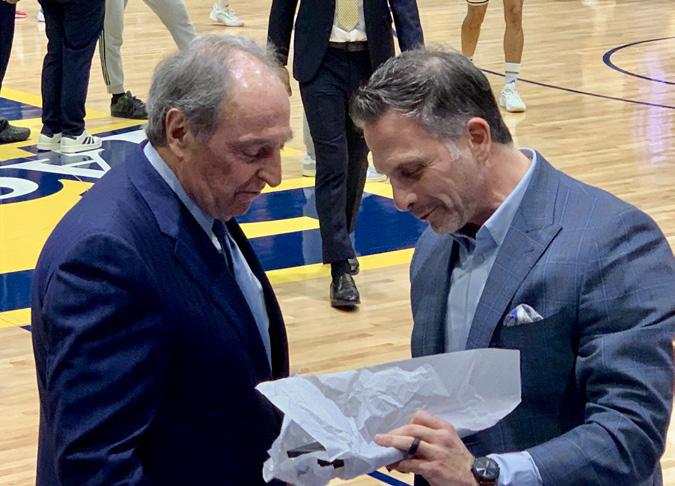
‘‘
You are sitting there, and the clock is winding down, and you know you have won the game. There are not a lot of feelings like that.”
the time. But it is also your competitive spirit.
“The thing that charges you is trying to prepare your team the best way you can, and when they do well, there is some satisfaction; peace over-
comes you. I was much at peace as that clock was winding down.”
So many players from Dunphy’s past made a point of being in attendance. They wanted to celebrate the man as much as celebrating his career. Generally, Dunphy is a person who likes the story always to be about the players and the school, but he shared an incredible experience during his final week on the job. “I was on a podcast with all the guys I coached with from 1980-85 at American University, including Gary Williams, who just turned 80,” Dunphy said of his time as an assistant coach. “I had a blast reminiscing. I told Williams that day that nobody was more prepared to practice, let alone the games. My man would go through practice with a sheet of paper all crumpled up, but he knew exactly what he wanted done. The biggest fear we all have is whether my team is prepared enough. “He was a guy I learned so much from. Even though I wasn’t a great student then, I took away the fact that you have to be ready to
go every day. I was really lucky to coach really good guys at really good programs. I am a very lucky guy.”
DUNPHY IS ALSO A GUY who understands community and our role as human beings to make a difference.
“We are given all these platforms; jump in and try to help as much as you can,” he said. “I am so proud of the Coaches vs. Cancer projects we have gotten involved in. So many people joined us as if it was their duty. It wasn’t their duty. We loved people coming together with us. It was amazing to see people getting behind the cause. Philly has always been that way. As imperfect as we are, we are a pretty good group throughout the city. I wouldn’t want to be anywhere other than Philadelphia, coaching college basketball for as long as I have had the opportunity. It’s pretty fabulous.”
Dunphy enjoys playing golf with his friends at Rolling Green Golf Club in Delaware County. Tee times will likely be more abundant with retirement. Still, Dunphy has bigger plans that, not surprisingly, circle back to relationships.
“One of the things I would like to do is go see Swan Lake,” Dunphy shared. “I have never been to a ballet in my life, but I would like to go because my brother went. He said you will like it. I lost my brother a little bit ago. I will go to Swan Lake, and I hope to go to Normandy; those are on my bucket list. I will feel like a pretty lucky guy if I can do those.”
Fran, we are the lucky ones to have been touched by your kind, humble, caring ways for more than thirty years in the City of Brotherly Love. n



Kevin Reilly is an author, motivational speaker, and former Philadelphia Eagle. To contact Kevin Reilly, visit https://www.kevinreilly52.com
WHAT A THRILL to watch the Eagles in the fourth quarter–and not have an anxiety attack!
Despite their 14-3 record in the regular season, several close games kept us on the edge of our seats until the very last minute. The playoffs, however, were much different. In fact, the post-season average score had the Eagles on the winning edge of 36-19 points.
As a former Philadelphia Eagle, everyone wanted to know my Super Bowl predictions. Even still, no one trusted my intuition over the Vegas odds, which had the Chiefs slightly favored. This year, I said the Eagles would win the Super Bowl by at least 8 points, and have a +2 in the turnover category, but that didn’t sit well with the armchair quarterbacks.
Everyone underestimated their excellent Defensive Coordinator Vic Fangio, who had not one but two weeks to get ready for the Chiefs. I knew Mahomes had no chance to be prepared for their defense.
In the first quarter, the Eagles’ defensive front four were consistent on their pass rushes. Both Eagle edge rushers went upfield for 4-5 yards and then collapsed the pocket giving Mahomes only two options: throw or run up the middle.
Sure, he had one or two good runs, but he was basically shut down. Truth be told, the Chiefs had only 23 total yards at the half. Maybe Villanova could have had more than that.
I could tell the game was over by the first half. The Eagles’ defense played downhill football with hard-hitting tackling, stopping the Chiefs dead in their tracks, if not sending them backward.
We can’t forget one other key factor in the Eagles’ victory–they were having FUN while doing it. I’ve experienced that adrenaline rush on a few occasions during my NFL career. Sacking a clueless team during the first half of a game is a great way to build momentum that ultimately secures the win.
So, the Eagles are the 59th Super Bowl champs! Can they repeat? It is my belief that yes, they can, and maybe some of you armchair quarterbacks at home should listen to me this time.
And last but not least, Howie Roseman, who has done an incredible job finding good talent, will have these 5 draft choices: 1st Round#32 | 2nd Round - #64 | 3rd Round - #96 | 4th Round - #129 | 5th Round - #162.
Go Birds!


BY ALEXANDRA DUNEK
ALTHOUGH MY COLUMN is typically one that gives fitness and health advice, this time I would like to recognize the Gaudreau brothers, Johnny & Matthew. The two NHL players’ lives were tragically cut short by a drunk driver last August while in town for their sister’s wedding. Not only were they memorable athletes but each was a loving son, devoted husband & father and a great friend to those around them.
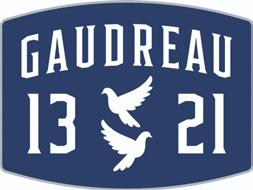
Born in Salem, NJ, Johnny and Matthew Gaudreau were only two years apart and shared the same profound love for ice hockey leading them both to play for Boston College and then professionally for 11 and 5 years, respectively. Johnny, known as Johnny Hockey,
was currently playing in the NHL for the Columbus Blue Jackets. Matthew was a pro (AHL & ECHL) turned coach at the time of their passing. At their first public appearance since the loss of their two sons, Guy and Jane Gaudreau, stood on the podium at the Doubletree in Cherry Hill, NJ and accepted an award on their behalf. The 120th Philadelphia Sports Writers Association Ceremony paid tribute in January to the Gaudreau brothers for their contributions to the NHL and held a moment of silence for the two who left this world too soon. In an old press conference clip that has been re-circulating online, Johnny says, “When my time does end here, I hope people will remember me as a good person off the ice and a good teammate.” I have no doubt that people remember them both as exactly that. n

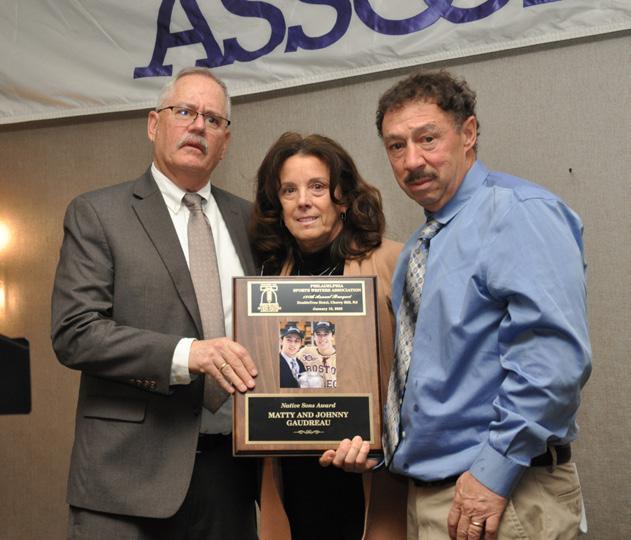


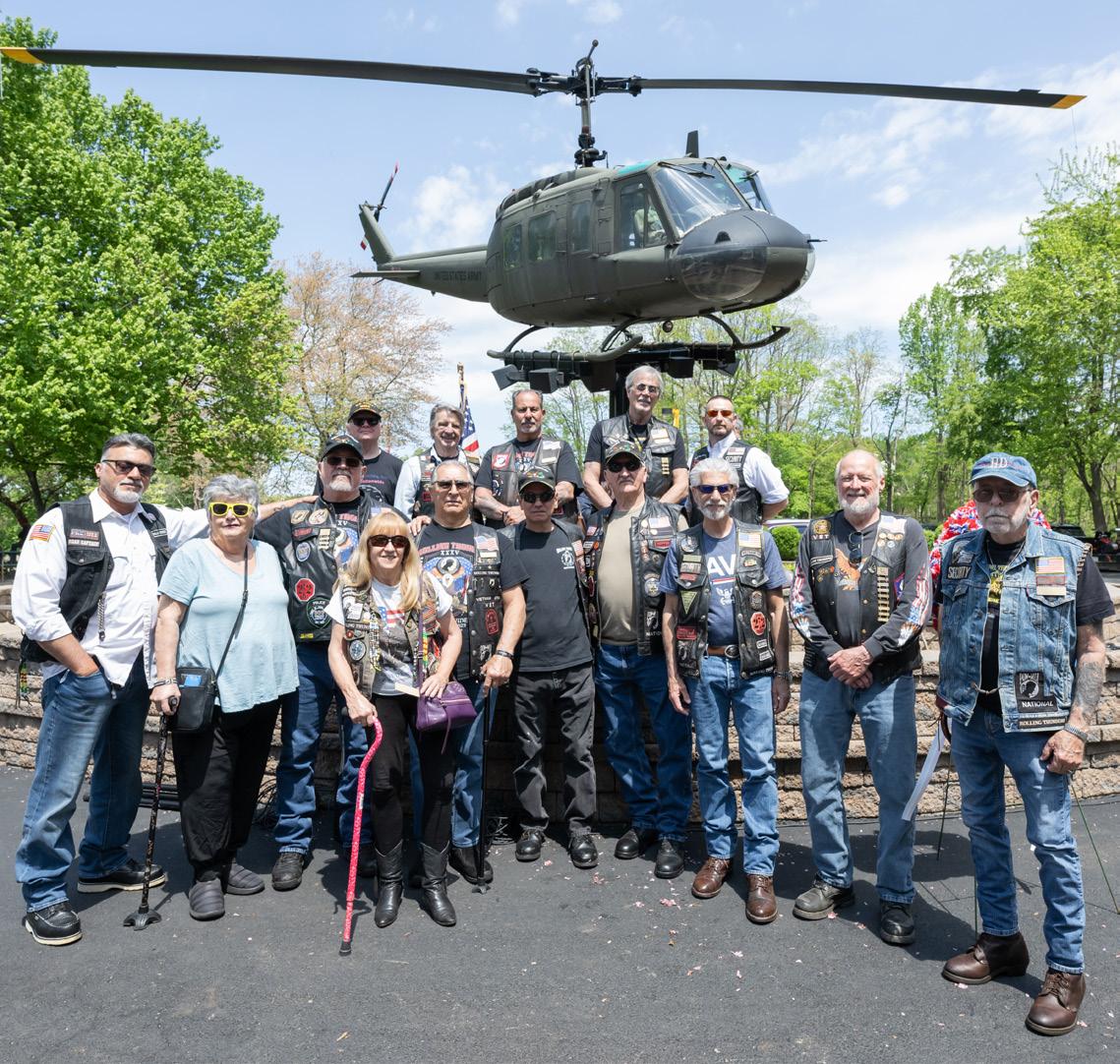
New Jersey’s Vietnam Veterans’ Memorial and Museum
BY PAT JULIAN VELLUCCI
After 58,000 dead and 300,000 wounded, Vietnam is a word charged with meaning and emotion; a trigger for the memory of parents and grandparents who lost a child, for spouses who lost a loved one, and for its survivors who lost their youth. For the country itself, it is an aberration to be overcome – the bitter distance between age and innocence.
Anyone who ventures to visit Holmdel, New Jersey’s Vietnam Memorial and Museum will know they are in the right place. As you approach a completely restored HUEY Helicopter, the sound of its menacing blades roaring hovers over an original combat tank among the other dazzling monuments. And it is hard
paid the ultimate price for their service and to educate students, teachers, historians, and the public about our involvement in Southeast Asia. Tours often leave visitors of all ages emotionally moved.
The primary goal of the Memorial and Museum is to honor those New Jerseyans who paid the ultimate price for their service. Tours often leave visitors emotionally moved.
The walls, which abound a small theatre, are lined floor to ceiling in chronological order starting over a thousand years ago. Through the use of film, video, kiosks and award-winning photography, the multi-media learning center is a time machine that transports its viewers, beginning with a colorful mural of Cho Chin China (its name prior to Vietnam) to the war’s end in 1975 as they unfolded “In Country” (Vietnam) and throughout the United States. Mongols, Chinese, Japanese and French invaders are depicted. They all came to conquer. And they all failed.
At the memorial, there are 1,565 names on the wall, 1564 men and one woman, Captain Eleanor Grace Alexander. Unlike institutions of its kind, the NJVVMM puts faces behind the names on the wall and uncovers the stories of those who lived through the conflict at home, arguably the most ambivalent time of the 20th century.

pletion, the huge aircraft was gently towed, escorted by State Troopers and veterans of three wars – including a wheelchair-bound WWII Veteran – to its resting place outside the Museum. At its dedication in 2014, included in the crowd of over a thousand, was NFL great and Bronze Star recipient, Rocky Bleier, who introduced the original crew of highly decorated pilots and gunners who served on the Huey. At the posting of the colors, a squadron of combat helicopters flew overhead to pay their respects.
to believe they barely set the stage for the amazing collection of artifacts awaiting them inside. The primary goal of the Memorial and Museum is to honor those New Jerseyans who
Fascinating histories accompany the memorabilia as told by the tour guides, all of whom are Vietnam Veterans. Its Chopper, for example, was discovered rotting away in a hanger at Maguire Airfield. Over the next months, the veterans themselves refurbished it. Upon com-
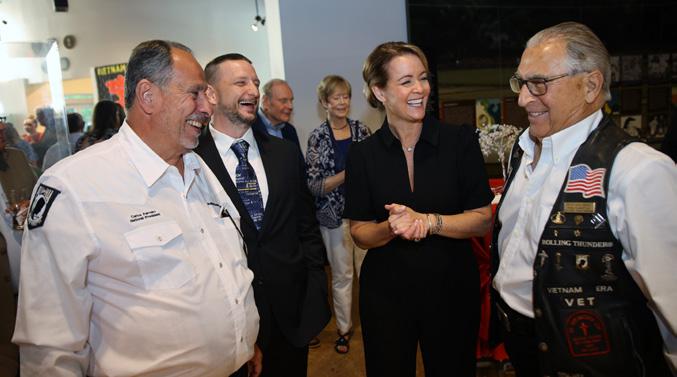
The concept of building a Memorial to New Jersey’s fallen heroes from Vietnam became a piece of legislation written by former State Senator Edward T. O’Connor, Jr., the first Vietnam veteran elected to the NJ State legislature. In 1986, Governor Tom Kean signed that legislation, and the promise was made. All the political heavyweights supported the idea, through the Florio Administration and beyond, and a committee was formed to lead this charge; they found a location, put their expertise and passion into it and the project was on its way. In May of 1989 sixteen Vietnam Vets, called the Last Patrol, marched 237 miles from DC to its site with the rubbings of the NJ names killed in action. On 12 April 1995, the Memorial had its dedication. A crowd of over 15,000 joined General Norman Schwartzkopf to celebrate the event. The General took the occasion to say, “I’m most proud of being a Vietnam Veteran and the Memorial reminds me why.”
On 17 September 1998, at the dedication of the Vietnam Era Museum, Governor Christie Whitman and her late husband John, a decorated Vietnam Veteran, introduced keynote speaker, former POW John McCain. The sena-
tor delivered an emotionally charged speech sharing his experiences being shot down, and years of torture as a prisoner at the infamous Hanoi Hilton. The crowd of over 15,000 could not stop what is said to have been an eightminute standing ovation.
Now in its 27th year, the NJVVMM Board of directors led by Major General Clark Martin, a decorated fighter pilot with over one hundred missions flown over North Vietnam, decided the facility needed to be expanded. Retired state senator and Gold Star family member Nick Asselta joined the team, and his first promise was to bring the operation to its next level. The Senator’s late brother, Charles “Chickie” Asselta, was a decorated veteran whose name is etched on the wall. Senator Asselta was emotionally involved. And his first move was to hire a new Executive Director.
, a Renaissance woman and Jersey Girl if ever there was one. This Ocean City native is a former Miss New Jersey and Miss New Jersey-USA, a fundraiser, former bank VP, USO producer and a voice for veterans in one way or another. Her work with veterans is vast, spanning the course of thirty years, and including different
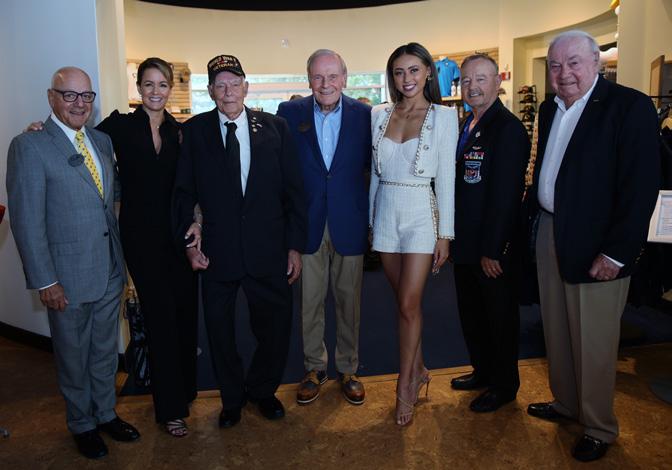
presidentially approved positions. And she has not stepped gently into the water. The new director announced a “facelift” for the entire Museum, and she went to work disabusing the operation’s unofficial title as ‘the best-kept secret in the state.’ Osborn said, “I tried to convince everyone that given the unprecedented reputation of this honored place, and the 1,565

people to whom we pay tribute for their heroism, this nickname was NOT a compliment.” And she did not waste time finding the right messenger to tell the story of the New Jersey Vietnam Veterans’ Memorial and Museum, the only site of its kind in the nation.
is an Academy Award-winning filmmaker whose work on social justice themes has won dozens of honors including the Sundance Special Jury Prize, The Golden Eagle, and an EMMY Award. Her films have been shown at the White House, in Congress and at the United Nations. Ms. Roth, and her equally awarded crew, embedded themselves in the NJVVMM storytelling initiative and soon became part of the family.
Fast forward to October of 2023. Lights, cameras, and various electrical equipment are strewn about as the director interviews the many political and media stars who are an integral part of the institution. Visitors, students, and their teachers are being treated to a tour by the Vietnam veteran Docents who lead the educational classes-- men who returned home to face the perverse distortion of their honorable reality. In fact, they comprise a faculty of men who have collectively served over 35 years “In Country,” seeing action in the Army, Navy, Air Force, Marines and Coast Guard and have been awarded silver and bronze stars, over 15 Purple Hearts, countless Air Medals, Combat Infantry and Medical Badges. They are the beating heart of this Museum, and in the parlance of the military, they are “the real deal.” Since its opening in 1998, over 250,000 visitors have thus far arrived
to bear witness to their reality.
Typical of the director’s work, Vanessa Roth does not set out to win you over but rather to set the record straight; to provide a biting corrective to the countless anti-veteran opinions about the war. Her film ensures that the hardships and sacrifices of those who fought the war are not overshadowed by accounts of dissension at home or reports of atrocities committed by the troops. The main film, entitled A Place of Honor, was recently nominated for three awards in the GI Film Festival San Diego in May of 2025, and the New Jersey International Film Festival in June of 2025. It is recognized alongside two of the short films, In Our Shoes and Remembrance. At the Museum, and elsewhere, these films have been welcomed by sold-out audiences and standing ovations… along with many shed tears.
On a sunny day in October of 2023, at our hallowed wall of heroes, a high school marching band from Pleasantville, New Jersey, accompanied by their corps of cadets, numerous residents, faculty, and students--both current and former—have come together. They are there to honor their hometown hero, fallen Petty Officer James Edward Gosselin, who is being enshrined on the wall. A graduate of
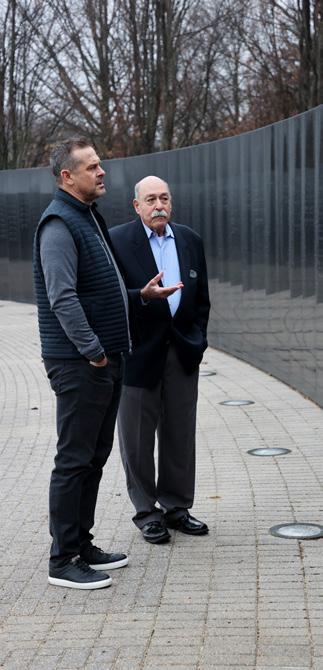
Pleasantville High School, and a decorated Navy Corpsman, killed in action on 2 February 1968, Jim Gosselin was erroneously recorded as being from another state and therefore was not originally on the NJ wall. Today, thanks to the concerted efforts of one of his classmates, Vietnam veteran and retired Lt. Col. Bill Leipold, Jim Gosselin is now with his brothers, on our revered wall of heroes.
there have been many notable visitors to our one-of-a-kind place, most recently Aaron Boone, the manager of the New York Yankees, who comes from baseball royalty, was part of another sold-out crowd at our museum, which Mr. Boone himself described as “moving … and impactful.” And the future lineup of guests is no less impressive.
Osborn’s plans for the Museum are ambitious, but her commitment is unwavering. And with an enthusiastic staff, a dedicated Board of Trustees, seven of whom are Vietnam veterans, and a passionate group of Vietnam veteran Docents - men who never stopped loving their country, even after it stopped loving them – all promises will be kept. n

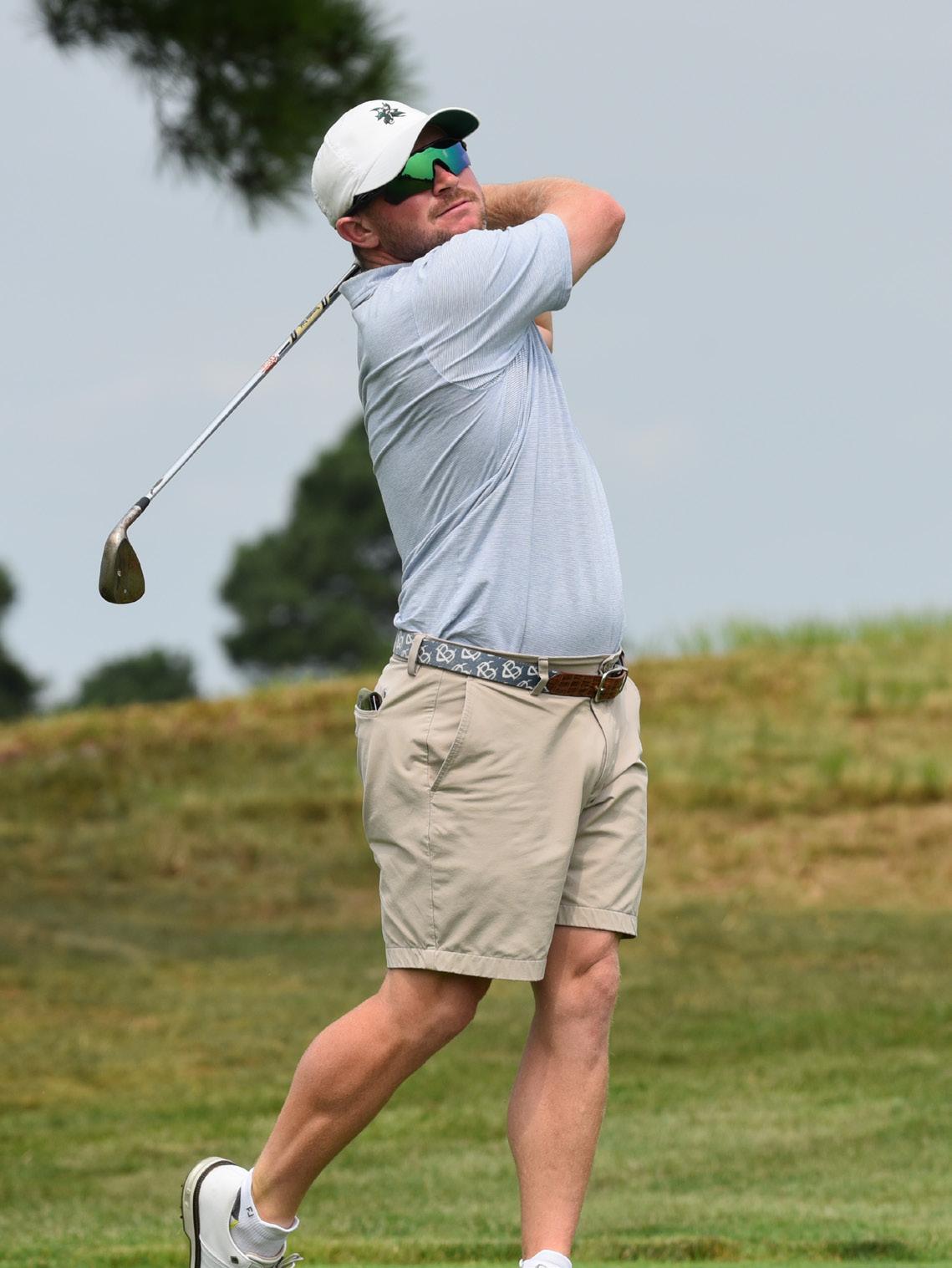
BY BEAU GUARINO
IFIRST MET HIM in the summer of 2010. Little Mill’s most prolific member, world-class blackjack player Tommy Hyland, invited his nephew from Memphis to New Jersey to spend the summer with him. Revered by many, including myself, when Tommy asked me to play with his nephew, I happily obliged. It didn’t take me long to realize that Tommy’s nephew was different. His Memphis twang, short stature, and wildly unpolished golf game quickly became the topic of conversation at the club.
Cutting your teeth at Little Mill is a painful experience, requiring perseverance and a trash can full of golf balls. Tommy had the golf balls covered, but I naturally doubted his nephew’s resolve. Repeated trips through the suffocating Jersey Pines quickly weed out the weak-minded and

leave those who endure with more questions than answers. That summer, Tommy’s nephew explored every inch of those pines. With a short game hazardous to his playing partners and distance control resembling a player with a broken rangefinder, it was no surprise his scores matched July’s daily highs. It seemed this summer golf retreat was a failed experiment, and Tommy’s nephew would become a distant memory.
Sixteen years later, Troy Vannucci, the 2023 GAP and NJSGA Player of the Year, is a household name on the Tri-State amateur golf circuit. While his game has drastically improved, his stature remains the same. What he lacks in height, he more than makes up for in tenacity. While country clubs are adult playgrounds for most, Troy abstains from the surrounding distractions and vices. He can usually be found on the range honing his craft with a practice routine more akin to a tour professional than a
32-year-old project manager. When he’s not on the range, he’s on the course, routinely taking money from anyone willing to challenge him (good luck finding a Little Mill member who hasn’t handed him money).
Unlike most amateur players, who dabble in qualifiers or play selective schedules, Troy’s is unrelenting. While most South Jerseyans spend their summers at the Shore or relaxing by the pool, Troy is buzzing up and down the New Jersey and Pennsylvania Turnpikes and resting his head in budget hotels. In 2024, he estimates playing over 50 tournament rounds across eight states, staying in 22 hotel rooms, and driving more than 9,000 miles.
To recreational or non-golfers, this lifestyle may sound exhausting—even mad. There is a level of acceptance amongst competitive golfers that we are all a bit deranged; the only thing up for debate is the severity. Where recreational golfers play the game to
seek comfort or a good time, competitive golfers embrace discomfort; they thrive on it. They need it.
Like any high, the thrill begins with a rush, often followed by a spiraling descent. Those who return again and again bear scars—close calls, one-shot misses, good shots that flee the mind, and bad shots that linger - all vying for mental real estate. Yet, the chase continues. Some might call it a sickness, a paradox where heartbreak fuels rather than defeats.
DESPITE NOT WINNING any major championships in 2023, Troy completed the rare feat of earning both the NJSGA and GAP Player of the Year honors through a host of top finishes. He lost in the final match of the NJ Mid-Am, where he held a late lead on the back nine against local legend Michael Brown. He medaled in the stroke play portion of the GAP Amateur before being bounced in the first round by last-seeded Patrick Itswan. He led the NJ Open entering the final round before a disappointing final round 73 left him in a tie for 3rd. Shortly after, he would go on to lose the GAP Patterson Cup by one shot: a missed short birdie on the last hole sealed his fate.

The pattern was consistent: steady play marred by heartbreak in key moments. This theme extended beyond 2023.
In the 2018 NJ Open at Montclair, he was the low amateur, finishing two shots out of first place. 2021 was particularly painful—he lost in the finals of the NJSGA Mid-Am, followed by a one-shot loss at the PA Open at Oakmont C.C.
to world-class amateur Jimmy Ellis.
As the years went on and the close calls continued to mount, part of me feared the mental scar tissue would begin to erode his playing ability. As we have witnessed on professional circuits, no one is immune to this. Sometimes, the game simply gets the best of a player. Troy’s playing ability seemed to be both his


greatest strength and weakness - resulting in high-level play but enormous expectations that he couldn’t seem to meet. After his winless 2023 campaign, the goals for 2024 were clear: the results would be binary. It was time to win.
HIS 2024 CAMPAIGN would begin at the GAP Mid-Amateur, Philly’s first major championship of the season. Held at the tight and challenging Commonwealth C.C., the Arnold Palmer design demanded precision over length, favoring the accurate Vannucci.
The same Pro V1x’s that navigated through Little Mill unscathed became cannon fodder at the hazard-riddled Commonwealth. Dubbed his “worst performance of the year,” he would finish 11-over, leaving him in a tie for 16th.
His next start consisted of a heart-wrenching 19-hole loss in the quarterfinals of the NJSGA Mid-Am to the eventual winner, Austin Devereux. A T12 at the GAP Open and a T6 at the NJ Amateur followed, finishing 3 and 8 shots back, respectively.
These finishes would be considered a success for just about anyone outside of Troy. The standard of “win or bust” golf appeared to be weighing on the steely South Jerseyan.
“It was time to step back and reassess things a bit. I wasn’t getting a good roll on my putter for quite some time. I went to get the lie/loft checked, and I was shocked. My putter had 6 degrees of loft.”
He returned to Little Mill, two-degree lofted putter in hand, and proceeded to torch his
Troy’s playing ability seemed to be both his greatest strength and weakness - resulting in high-level play but enormous expectations that he couldn’t seem to meet.
home track en route to a 64, including a 7-under, 29 on the challenging white nine.
As the weeks went on, the rounds in the 60s at Little Mill continued - 68, 67, 65, 69, 67. Out of all the renowned players that have come through “The Mill,” this figured to be the greatest stretch of golf seen at the Marlton track.
This success soon translated into tournament play, where Troy played himself into a familiar position—the last pairing in the final round of the NJ Open. By day’s end, he would suffer a similar fate—a disappointing final round of 74 at Plainfield C.C., which left him in a tie for fourth and another empty ride home down the Garden State Parkway.
With the competitive schedule mainly behind him, it seemed 2024 would be another year where he would fall short of expectations.
FOR THE 8TH TIME in 9 years, Troy began August by winning the Little Mill Club Championship—this time by 10 shots. Despite the club being known for
its long list of scratch players, none are close to the level of Vannucci. This win would not change the season’s narrative—this was expected and ordinary.
And then, something special happened. Traveling to stormy Concord, PA, Troy returned wet, worn, and with a major trophy in hand. In a tournament where “for the first time all year, he was in total control of his game,” Troy went wire-to-wire to win the Joseph H. Patterson Cup, a GAP major whose notable winners include R. Jay Sigel and William Hyndman III.
The following week, he would win the PPGA Donald Ross Better-Ball, shooting a tournament record 19-under with partner Andy Butler.
Troy was officially rolling into the season’s last major - the Pennsylvania Mid-Amateur, held at Moselem Springs G.C.
After one round, Troy found himself one shot back of the lead and once again in the final group of a major. This time proved to be much different. Fifteen pars and three birdies later, Troy was crowned the 2024 Pennsylvania Mid-Am Champion.
A victory in his next start, the Whitford ProAm would make for five wins in 5 starts.
With his game peaking and the results materializing, Troy decided to take a look at the NJSGA Player of the Year standings.
“I was looking at the NJSGA POY points list to see where I stood, not thinking much of it. I found out that if everything went my way and I got a little lucky, I wasn’t mathematically out of the running. I essentially needed to win out.”
Standing 176 points behind Jack Wall, with only 225 available points over three remaining events, Troy would need to have top finishes in the Bergen County Amateur, the Eagle Oaks Invitational, and the Nassau Invitational to safely secure POY honors.
Troy would proceed to demolish the field at the Bergen County Am by 12 shots, earning 75 POY Points with his victory. In the pouring rain at Darlington G.C, he would shoot 7-under for 36 holes - a 3-putt bogey would be his only blemish on the day.
At the prestigious Eagle Oaks Invitational, Troy would go wire-to-wire, finishing as the only player in red figures at 4-under. For his efforts, he would earn 75 POY points and a free membership to Eagle Oaks C.C. for the 2025 season.
Now trailing the NJ POY by 26 points, it would all come down to his last tournament, the Nassau Invitational.
In order to surpass Wall, Troy would need to qualify for match play and win one match. The talented field consisted of one of Ireland’s best
amateur players, Jack McDonnell, 2022 NJSGA Amateur champion William Celiberti, and a host of other top players. With a strong field and an unknown course, “Player of the Year” was far from a formality.
With howling winds and concrete-firm greens, the qualifying scores were exceptionally high, except for Troy, who finished as the only man in red figures with a 3-under par 67.
As the #1 seed in match play, all that stood between him and the POY was a victory over 16-seeded Andre Klepper. A hot start by Klepper led to an early two-down deficit for Vannucci. With his back against the wall, Troy would respond with five birdies in his next 10 holes, leading to a 3 and 2 victory.
It was official: Troy Vannucci was the 2024 New Jersey Player of the Year.
He would go on to win his next two matches, defeating McDonnell and Celiberti in the process. In the event’s final, he would play his first 10 holes at 6-under par, overwhelming competitor Carter Prince en route to his eighth straight win.
Two more better-ball victories capped his historic run: the North Hills Invitational paired with clubmate Dan Keenan, and the Harold Cross held at Philadelphia Cricket Club, where
he and his partner, Scott McNeil, made a cumulative 20 birdies en route to shooting a tournament record 17-under par.
And just like that, the player who had seen victory elude him so many times, in the cruelest forms, had now collected 10 consecutive wins in 10 weeks - a career’s work for a successful Amateur player and a pipe dream for the rest of us.
BENEATH THE VEIL of close losses and sleepless nights was a player developing into a winner—to all of us who have the pleasure of calling Troy a friend, this is no surprise. The same boy who survived the South Jersey pines nearly 20 years ago took some of the biggest shots the game can throw and found light in the darkness of defeat.
Some say golf is just a silly game, a pastime, something to do with buddies - but for others, it is much more. There is much to learn from a game that promises nothing, gives in small doses, dishes more pain than pleasure, and forces you to heal on your own. Home to some of the fondest memories and greatest defeats one will experience - but those who return learn there is much more to this game than
wins and losses.
For me, it broke mental barriers that previously caused fear and self-doubt. If the game had not provided me with the platform to work through those challenges, I feel my life would be vastly different today.
In Troy’s case, he proved to himself that he could repeatedly look failure in the face, draw on his courage to persevere and emerge on the other side as a champion. This will undoubtedly translate to other aspects of his life.
As our journeys continue, Troy will likely win many more tournaments, and I would be fortunate to win anything of significance. But what we take from the game will be the same. The memories we will make, the relationships we will form, and the opportunity afforded to test and grow our character. Golf provides a constant measure of who we are as people and a platform to help us grow into the best versions of ourselves. These opportunities are offered to all who continue teeing it up, and God willingly we will. Because no matter what is thrown at golf’s deranged, our love for the game will always outweigh the heartbreak, and we will keep coming back to receive what this great game has to offer. n




“You’ve got to have the courage to take a dream and make it happen.”
FFor the second time in his life, Mike Trout has landed a dream job.
The 11-time Major League Baseball all-star and three-time American League Most Valuable Player already has the career that anyone who’s ever suited up to play Little League Baseball would dream of.
Now, with a contract with the Los Angeles Angels that runs through 2030, the 33-year-old Millville native has added golf course owner to his resume with the creation of Trout National - The Reserve, located not far from Route 55 in Vineland, bordering the outfielder’s hometown of Millville. Owning a course is a role that he’s always imagined since shortly after first picking up a golf club and learning the joys of the sport while he was busy dominating the scholastic baseball scene in South Jersey during his high school days.
“It’s one of the things I’ve always dreamed about,” Trout said while sitting 10 feet beside a large map of the 18-hole members-only club that he and partners John and Lorie Ruga, owners of the Vineland-based construction company Northeast Precast, will open at roughly this time next year.
“There’s going to be a time when I’m not
Mike Trout is bringing his vision of a world class golf club to South Jersey
BY MIKE SHUTE
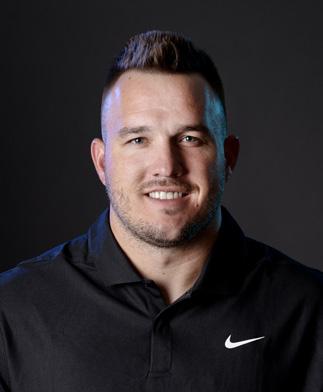
playing [Major League Baseball] anymore and… you talk to a lot of former pro athletes and baseball players who’ve been in the game for a while and [they say] the first year of not playing, you’ve got to find something to do. This is definitely something that will keep me busy, but I just truly enjoy the game of golf. Getting the opportunity to make decisions and being able to build what we want and how we want, I think that’s the coolest part about it.”
Another cool part? How about the fact that
Tiger Woods’ course design company, TGR Design, has been helping the South Jersey natives carve out this unique track planned as a par-72, 7,455-yard course that mixes Links and Parkland styles. Woods has visited at least five times and is truly taking a hands-on approach to crafting a unique, challenging and fun golf experience, bringing Trout and the Rugas’ vision to life.
“When Tiger comes out to the course and has his visits, it’s pretty amazing to see him visualize and then watch him change a hole,” Trout explained. “Being able to look at a blank slate, [he’ll say] ‘you need a bunker here and a bunker there.’ On [hole] No. 18, back in August, when I came back, they shaped out the whole fairway and everything the way he visualized and it was almost done, and then we get on the tee box. He gets up there and says, ‘No, I don’t like it, we need to move the fairway to the left, add a waste area, I don’t like you hitting it this way.’ It’s pretty amazing to just watch him work.”
John Ruga has been around construction his entire life since working for his father’s company, Jersey Contractors, before starting his own company in 1998. He’s seen a lot but was genuinely impressed with the intricacies
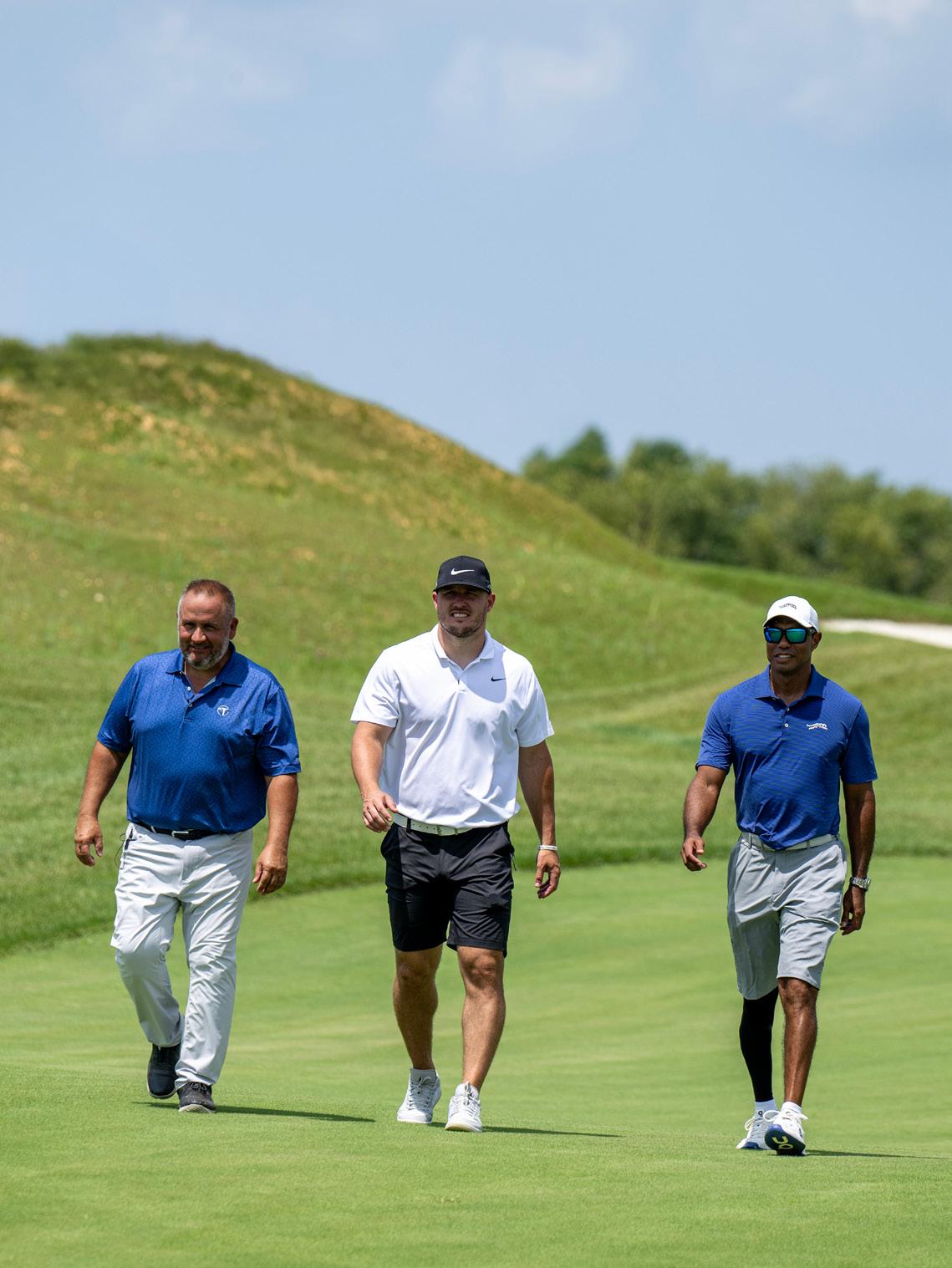
“The economic impact on the community will have a massive ripple effect.”

of creating a golf paradise on the 280-acre property that was formerly the site of a silica sand mine and adjacent farmland.
“We have site work equipment, so we moved the bulk of the dirt and did most of the land clearing,” said Ruga, a 1987 Buena High School graduate who grew up in the tiny town of Dorothy, east of Vineland. “Then once we had a layout, Tiger had his shapers on site and Marc Burger is his main guy. He’s like DaVinci on a ‘dozer. The bulldozer was his paintbrush. It was really fun to watch because he never had a print in front of him.
“When Marc was on the dozer, whatever he was building was in his head based on what Tiger would say. Tiger would give him param-
eters of what he wanted and then the rest was on him. I’ve never seen anything like that. I’ve been building my whole life, and this was something unique and to see him do what he did to this property was incredible.”
According to Mike’s brother Tyler, a 2006 Millville High grad and former member of the Thunderbolts golf team, the course is expected to employ 100-110 people in full-time, year-round positions. Plus, there will be several dozen part-time and seasonal positions that will need to be filled as well.
“But it’s more than that,” said Tyler, the development director of Trout National. “For example, all of the people out there now who have been creating the course are local crews,

and then once we’re operational, it’s the vendors and other people and businesses who support a club of this stature. So, the economic impact on the community will have a massive ripple effect.”
Ruga, a 56-year-old Vineland resident who met Trout while being involved in building the baseball star’s home in Cumberland County, added: “It’s a snowball effect and that makes it nice to be involved in. Knowing that it’s creating more opportunities for the community and just the exposure it will bring to the community is really prettye special.”
turned course designer, Woods has watched Trout’s exploits in the Majors over the years and jumped at the chance to work with the 2009 Millville High grad and 25th overall player chosen in that year’s MLB Draft.
“I’ve always watched Mike on the diamond so when an opportunity arose to work with him on Trout National – The Reserve, I couldn’t pass it up,” said Woods in a statement from Trout National. “It’s a great site for golf and our team is creating a special course for Mike, Jessica [Mike’s wife], John and Lorie.”
Trout’s admiration of Woods is certainly mutual.
“The first time we met was through golf and he was really the whole reason I got into golf

There are many unique and interesting parts of Trout National — The Reserve, the private members-only golf course being built in Vineland by Major League Baseball star and Millville native, Mike Trout and his partners, the Rugas, John and Lorie, the CEO and COO of Northeast Precast in Vineland.
There’s a peninsula green on Hole No. 8, a fully lit 18-hole short course, a 7,600 square-foot performance center, and a 30,000 square-foot putting course and short-game area.
But nothing on the course is more significant to the 11-time American League All-Star, than Aaron’s. Named after Mike’s late brother-in-law, Aaron Cox, a former Angels minor leaguer who passed away in 2018 at the age of 24. Aaron was known as the life of the party. Aaron’s will be one of the premier hangout spots. Spanning the 8th to 11th holes, it features wrap-around terraces, fire pits, outdoor cooking, and an indoor-outdoor bar where members and guests can gather to relax.
Aaron’s is not just a place for fun, it’s Trout and wife Jessica’s chance to recognize the importance of mental health. Mike and Jessica don’t have an official foundation but a lot of their philanthropic efforts and charitable works are pointed toward suicide prevention and mental health resources all because of Aaron, who Mike considered one of his best friends.
“People need to speak up and I think just trying to bring awareness to these issues is important,” Trout said. “For me, with my platform, mental health is huge and it’s a big problem and to be able to bring the awareness to it means a lot to me, it means a lot to my family, my wife, her family.
“Sometimes that’s all you need, just to be able to get it off your chest and speak to somebody.”
Even for someone as successful and accomplished as Trout is, he has certainly seen his struggles on the diamond and, like anyone else, you can bring things home and get a lot of things stuck in your head. But he’s recognized, personally, what helps him and advocates that others should do the same.
“I think speaking up and talking, instead of sitting back,” said the 33-year-old, three-time AL MVP. “There were some times when I was going through some tough situations and, knowing the process and talking about mental illness and how to make it better, I knew I needed to speak up about it.
“Instead of sitting in the corner, taking it all on yourself and thinking about how terrible the situation may be, think about the positive things. In my case, just have the conversations with your trainers, have the conversation with your wife, your family members, whoever. Sometimes that’s all you need, just to be able to get it off your chest and speak to somebody.”
Despite his unfortunate luck with injuries over the last five seasons, he’s on the right mental track and ready for a big 2025.
“The last few years haven’t gone the way I’ve planned,” said Trout, who’s played in 319 of a possible 810 games since the start of the 2020 season due to a variety of injuries. “It’s been frustrating, trying to get back quick and then having the bump in the road and the setbacks. Things haven’t gone my way but I’m fully good to go this year, fully healthy, and really looking forward to it.” — Mike Shute
in the first place,” Trout said, echoing the sentiments of many golfers who’ve taken up the game over parts of the last four decades. “Being able to see him on a personal level and see him working at the course…. It was cool to see that different personality. Most people only get to watch him compete and it’s strictly business and now designing the course and to be able to talk to him like I’m talking to you, it’s pretty cool to get to know him.”
Trout hopes the private club can offer an escape for its members. Getting out of the spotlight and onto the serenity of a golf course is something that the nine-time Silver Slugger Award winner truly enjoys. He also has a great love for his hometown. So to be able to partner with the Rugas and bring this project home to South Jersey has special meaning.
“With baseball, it’s your life, but to be able to have something that can distract you from it and help you get away from it a little bit, it’s a big help,” Trout said. “Even before we started with the course, golf was always kind of my thing — you know, play a round of golf to just get away from baseball a little bit. I really just enjoy it.”




And as much as Trout likes getting out on the course, he relishes returning to South Jersey where he can spend time with his loved ones who have meant so much to him.
Both Ruga and Trout also feel that it’s special to have the opportunity to build Trout National - The Reserve in what is basically both men’s backyard.
“It’s definitely great to be giving back to South Jersey,” Ruga said. “There’s a lot of opportunity and a lot of people here: South Jersey, Vineland, Millville. You’ve got to have the courage to take a dream and make it happen and we’re seeing it now. We know this will have a big impact, not just on Vineland and Cumberland County, but this is going to have an impact on golf in the entire Northeast. What we’re creating here is one of a kind.”
Trout added: “Going through all of the [draft] process when I was in high school and then when I got to the big leagues, the biggest thing for me was trying to put South Jersey, and really all of New Jersey, on the map. [Baseball players] get overlooked up here a lot because we only get 25 games [during the high school season] and we’re not really playing year-round like the states down south or out in California.
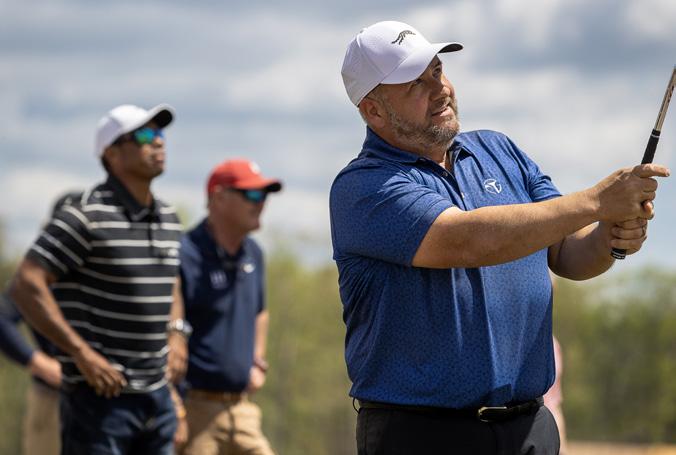
“Every opportunity that comes up, I try and figure out a way to get South Jersey involved, whether it’s publicly speaking about the area, doing stuff like this, to get involved or give back. Every chance I get to recognize the Millville and Vineland areas or the South Jersey area where I came from, I try to do that. I love
it here. And really, that’s one of the reasons I come back a lot. It’s where I was brought up. We live here in the offseason. The people have treated me great and like I said, I just enjoy it.”
In living out his baseball dreams, Trout put South Jersey on the map, and he’s trying to do it again with his dream job in golf. n



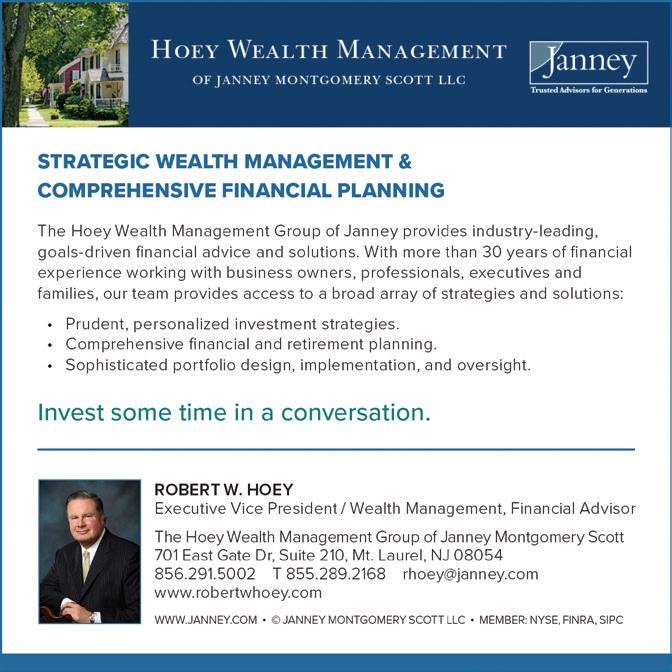


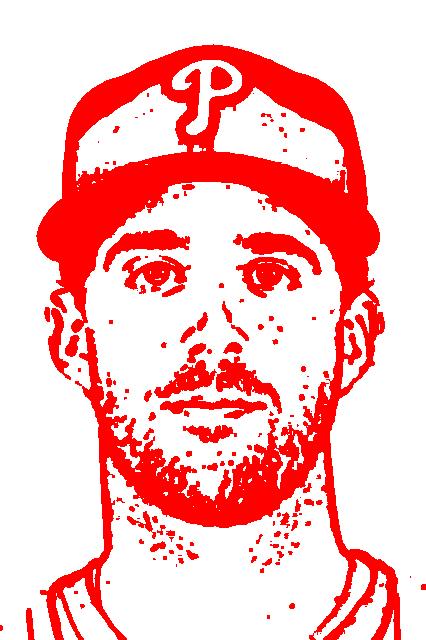
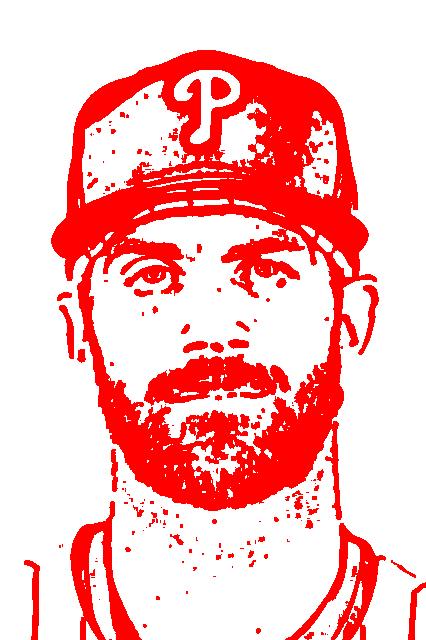
The Eagles thrilled the area with a Super Bowl performance for the ages and a glorious parade that will be talked about by generations of fans.
First baseman Bryce Harper said it was “sick” to watch the Eagles steamroll the Kansas City Chiefs and that it will serve as motivation for the Phillies.
“If I didn’t say I was excited to hopefully do that one day, I’d be nuts because that was pretty electric,” he recently told WIP radio.
The Phillies, who went 95-67 last year and then had a disappointing exit against the New York Mets in the National League Division Series, would like to throw a parade of their own.
But did they do enough in the offseason to generate optimism that they can win their first World Series championship since 2008? Probably not. Then again, if they add a piece for two before the trade deadline and their pitching is as dominating as it looks, well, Philly may become known as the City of Parades.
The Phils’ biggest offseason moves – acquiring lefty Jesus Luzardo from the Miami Marlins and signing free-agent left fielder Max Kepler – didn’t compare with the trades/signings made by the Dodgers, Mets and Braves, three other teams with the potential to win the National League pennant.
The defending World Series champion Dodgers didn’t sit on their laurels. They add-
ed pitchers Blake Snell (a two-time Cy Young Award winner), Roki Sasaki (a Japanese phenom) and lefty relief ace Tanner Scott, while the Mets signed the best free agent on the market, Juan Soto. As for the Braves, the loss of Max Fried hurts, but if Ronald Acuna and Spencer Strider successfully return from injuries, they will boost a dynamic roster. Atlanta shrewdly added outfielder Jurickson Profar. In the National League, the Dodgers, Braves and Mets appear to be the Phils’ biggest obstacles.
Here is a look at the 2025 Phillies and what needs to happen for them to throw another parade:
BY SAM CARCHIDI
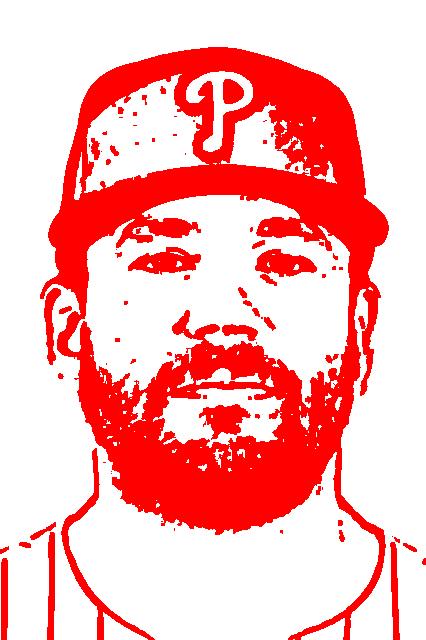
This category is clearly the team’s strong point.
The rotation starts with Zack Wheeler, a perennial Cy Young candidate who led the National League with a 0.955 WHIP (walks and hits per inning) last season when he was 16-7 with a 2.57 ERA and 224 strikeouts. Over the last five years, he has a 2.94 ERA. That’s the definition of a staff ace.
Aaron Nola (14-8 record, 3.57 ERA) is one of the best No. 2 starters in the majors, though he needs to cut back on the league-high 30 homers he served.
After the Big Two, the Phillies have three lefties, including Ranger Suarez and Cristopher Sanchez, two soft-throwing pitchers with great location. Luzardo rounds out the rotation.
Suarez needs to find more consistency. To start last season, he was 10-1 with an ERA around 1.80, making him arguably the league’s Cy Young frontrunner. But after being sidelined by back soreness, he had a 6.54 ERA over his last 11 starts. He finished 12-8 with a 3.46 ERA.
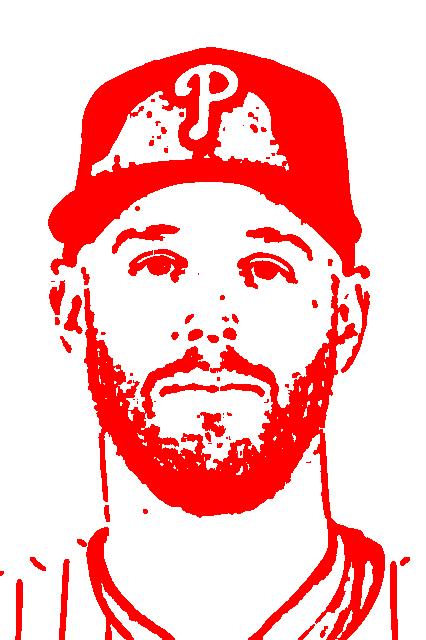
Sanchez (11-9, 3.32), the owner of an elite changeup, was an All-Star last season and is coming into his own.
Luzardo looked like a rising star after solid performances in 2022 and 2023, but injuries (left elbow, back) limited him to 67 innings last season and his ERA soared to 5.00. He had a 3.48 ERA in 50 combined starts the previous two seasons, and the Phils believe he can regain that form.
Dave Dombrowski, the Phils’ president of baseball operations, said his club did a “thorough” investigation into Luzardo’s health and called him a “quality big-league pitcher who we’ve liked for a few years.”
If Luzardo doesn’t perform well, Taijuan Walker – who was a disaster last season – or promising rookie Andrew Painter could see action. Painter has recovered from Tommy John surgery and was impressive in the Arizona Fall League.
The bullpen has undergone a major shakeup. Gone are Jeff Hoffman – who was brilliant in the regular season but scuffled in the
The Phils could have put Bryce Harper in the outfield and signed a big-ticket first baseman like Pete Alonso but decided to go a cheaper route. When you consider their payroll is around $278 million – third highest in the majors, per Spotrac –it was somewhat understandable.
playoffs – and not-too-dazzling Carlos Estevez. They have been replaced by Jordan Romano and Joe Ross. Lefty Matt Strahm (6-2, 1.87 ERA, 11.35 strikeouts per 9 innings) is the best of the bullpen returnees, along with the blossoming
Orion Kerkering (5-3, 2.29). The Phils should also get productive innings from Jose Alvarado (2-5, 4.09) and Jose Ruiz (5-1, 3.71).
Romano was a two-time All-Star with Toronto but had elbow surgery last summer. The Phils are betting on him to resemble the pitcher who had 95 saves from 2021 to 2023.
Ross, a veteran righthander, had a 3.77 ERA last year while starting 10 games and relieving 15 others with Milwaukee.
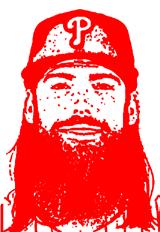
On paper, the Phillies didn’t do much to improve the team’s one major weakness. A year ago, the Phils’ outfielders were 28th out of 30 major-league teams with just 53 homers. The outfielders were in the middle of the pack in batting average, 22nd in RBIs, 26th in doubles, and 27th in runs scored. They signed the left-handed-hitting Kepler
to a one-year, $10 million deal and handed him the keys to left field. He will be making an adjustment from playing right field, where he was regarded as a solid defender.
“He hit lefthanders better last year, but he’s traditionally been a better hitter vs. righthanded pitching,” Dombrowski said. “We think he can play vs. both.”
Kepler, 32, who slammed a career-best 36 homers in 2019, won’t remind anyone of Soto, but if he can duplicate his 2023 season – .260 with 24 homers and 66 RBIs for the Twins –the Phillies will be happy.
The 6-foot-4, 225-pounder was hindered by injuries last year and hit just .253 with eight homers.
Brandon Marsh (.249, 16 HRs) and slick-fielding-butweak-hitting Johan Rojas (.243, 25 SBs) will get time in center. Marsh had a healthy .372 on-base percentage two years ago but slipped to .328 last season. Nick Castellanos (.254, 23

HRs) handles right field and is either ice-cold or blistering hot at the plate. There seems to be no in-between.
The Phils could have put Bryce Harper in the outfield and signed a big-ticket first baseman like Pete Alonso but decided to go a cheaper route. When you consider their payroll is around $278 million – third highest in the majors, per Spotrac – it was somewhat understandable.
That said, the Phils might add an outfielder before the trade deadline – or a first baseman and shift Harper to the outfield -- if they find they need more production.
The Phillies need second baseman Bryson Stott to get back on track. Yes, Stott stole a team-leading 32 bases, but his batting average slipped from .280 to .245 and his homers dropped from 15 to 11. An elbow injury may have contributed, and a healthy Stott would do wonders for the offense.
The rest of the infield is terrific: third baseman Alec Bohm (.280, 15 HRs, 44 doubles, 97 RBIs), shortstop Trea Turner (.295, 21 HRs, 19 SBs), and the irrepressible Harper (.285, 30


HRs, 87 RBIs).
Turner, who has a lifetime .348 on-base percentage, will probably get lots of time in the leadoff spot, while Kyle Schwarber drops down in the lineup.
Speaking of Schwarber… He showed much better plate discipline last year, cutting down his strikeouts (215 to 197), improving his on-base percentage from .343 to .366, and raising his batting average from .197 to .248. His homers dropped from 47 to 38, but he still finished third in the National League in that category. In his three seasons with the Phils, the 32-year-old Schwarber has slugged 131 homers -- more than anyone in the majors not named Aaron Judge (157) or Shohei Ohtani (132).
And, so, if he keeps hitting Schwarbombs, the Phillies figure to try to re-sign him after his contract expires following the 2025 season.
J.T. Realmuto, 34, is in the final year of his contract, and he is still productive. The Phils, however, will probably sometimes use him as
a DH to give him more rest from his catching duties. He hit .266 with 14 homers a year ago. Rafael Marchan, provided he can stay healthy, seems destined to get more time behind the plate than last year when he hit .294 with three homers in 51 at-bats.
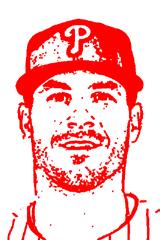
The Phillies’ bats and bullpen went cold in last year’s NLDS. Was it a case of bad timing, or is this team not good enough to win a World Series? In the 3-1 series loss to the Mets, the Phillies averaged 1.67 runs in the three defeats, and the bullpen trio of Hoffman (1-2, 40.50 ERA), Alvarado (27.00 ERA) and Strahm (18.00 ERA) were awful in the series.
On paper, the Phils need another hitter who works pitchers into deep counts and gets on base more frequently, especially in the outfield. The Phillies hit just .186 vs. the Mets in the playoffs.
Rojas and Edmundo Sosa (.257, 7 HRs in 249 ABs) are the best reserves, and Kody Clemens (5 HRs, 9 doubles in 114 ABs) can provide the long ball on occasion.
Is manager Rob Thomson on the hot seat? Some think he should be after making questionable pitching decisions in the last three playoff years. That makes 2025 a pivotal season for him and for the way the team is constructed.
The Braves, decimated by injuries last year, should battle the Phils and Mets for first place in the NL East, and the addition of Profar – an outfielder who gets on base and hits for power – may push Atlanta to the top. (The Braves have reached the postseason seven straight years.)
From here, the Phils will be a wild-card team, and if they make some in-season moves, they could get to the NLCS. The Dodgers, however, loom as the prohibitive favorites.
Prediction:
Phils go 92-70, finish as a wild-card team, and lose to the Dodgers in the NLCS. n





Former Phillies general manager Ed Wade reflects on a career in baseball, and his part in assembling a championship team in our city.
BY KURT SMITH
Former Eagles general manager Jim Murray once told JerseyMan about the importance of hiring the right coach for a GM’s future employment: “You’re all in. If you hire the wrong guy, game over.”
Imagine if, instead of hiring a proven successful college coach like Dick Vermeil, Murray hired a relative unknown, who wasn’t known for being articulate, to coach the Eagles. All while, say, John Madden was available and interested in the job. In Philadelphia of all cities.
That’s about the level of risk Ed Wade took in 2005. It worked out, but you probably remember the bafflement of the locals when Wade passed on Jim Leyland and chose Charlie Manuel to manage the Phillies.
But Wade was more involved with the process than the fans and media. He had more skin in the game, after all.
“We had a great group of guys that came in and interviewed,” he recalls. “I think all of them
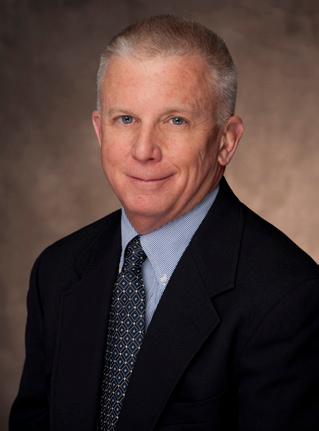
saw what the capabilities were of what the club could be. I knew Jim was greatly interested in the opportunity. There were four or five guys there that had solid, big-league credentials.
“You have to do your homework and not just base it on an interview. Some people knock
your socks off in an interview, but then when the rubber hits the road, it’s not quite what you had anticipated.
“Ruben [Amaro Jr.] was my assistant GM at the time. He played for Charlie in Cleveland, and we were in the process of chasing Jim Thome. Thome’s agent knew Charlie very well, and he was somebody that I really trusted his opinions. He had all the right things to say about Charlie.
“We hired Charlie to be the guy that really related with the players, could relate to great experience in the game, and obviously had the demeanor and baseball acumen to get it to the finish line. Everybody that was involved in the process came away with the same feeling, that this was the right guy at the right time.
“I’m a big believer in time and circumstance.”
Needless to say, during a lengthening championship drought, fans and media didn’t warm up to Manuel’s hiring right away.
“People were very disappointed,” Wade acknowledges. “They were surprised at his accent and the way he spoke, so on and so forth.
“Now I tell people, every time Charlie comes to town, he can’t buy a meal for himself.”
Public relations skills are important for a baseball GM, but so is the ability to ignore local sports media and fans in baseball decisions.
Wade credits his PR background when reflecting on his journey to becoming the head executive of the Phillies. In his humble beginnings, he had aspirations of being a sportswriter, but baseball people kept seeing greater things for him.
Growing up in the Scranton area as a Yankees fan, Wade dreamed that “I was going to be either Mickey Mantle’s or Bobby Murcer’s replacement in center field.” He played baseball as a journalism major at Temple, but he had no illusions about his skills.
Ed Wade currently lives in South Jersey, so he still seems to have a soft spot for the Philadelphia area. He calls his official current title “transportation director for three grandchildren”. Now that he has some time, he’s kept busy writing a couple of books, which he’s self-published.
Surprisingly, or maybe unsurprisingly, the books aren’t about baseball at all.

“Delayed Honor” centers on a character named Steve Laun, an ex-Navy SEAL who discovers that his father’s death was not accidental as initially reported. Soon, his father’s best friend is also murdered. In his investigation of what happened, he uncovers multiple bad guys and is determined to bring out justice.
Wade actually started “Delayed Honor” some time ago. “I had an idea for writing a novel, and between GM jobs, I had started to work on the idea a little bit, and I got the Astros GM job and set it aside.”
Once his second stint in the Phillies’ organization was over, he got back to it. “I just picked ‘Delayed Honor’ up and went through the research of self-publishing. Once I got ‘Delayed Honor’ to the finish line, I decided to try to write a sequel to it and ended up writing ‘Preserved Honor’.”
The books haven’t become bestsellers yet, but they have been well-received. As this sentence was written, “Delayed Honor” has a 4.2-star rating in 56 reviews (even if a few of them contain sarcastic remarks about Wade’s tenure as Phillies GM).
Selling books wasn’t so much the point to Wade. He hasn’t been on any promotional tours or signings. He just needed something to do with his time.
“If people want to read them, that’s great. I didn’t do it for the money or for people to read it. It really was just keeping my brain active and trying to do something a little bit different than worrying about a curve ball or a slider.”
You can find both “Delayed Honor” and “Preserved Honor” on Amazon, for Kindle devices.
by a guy named Ralph Flamminio, who had worked at the newspaper in Allentown. He encouraged me to take advantage of whatever opportunities presented themselves.”
Wade took the advice. He toiled for the sports department of the Scranton Times, worked as a gopher for the AP Philadelphia bureau, and then wrote about high school sports for the Philadelphia Bulletin. That led to an internship with the Williamsport Sun-Gazette,
job he later held with the Pirates for five years.
“At that point in time,” Wade remembers, “I thought that was the apex of my career.”
The Phillies had bigger things in mind.
“Lee Thomas became the general manager. I knew who he was, I know he didn’t know who I was. But between (Astros GM) Tal Smith and I’m sure some of the people with the Phillies speaking on my behalf, Lee ended up hiring me as his assistant.
Wade and his scouting staff drafted Ryan Howard, Chase Utley and Cole Hamels, promoted Jimmy Rollins, and brought in Carlos Ruiz as an international signing. And of course, hired Charlie Manuel.
“I was fortunate enough to end up with a team where the head baseball coach, Skip Wilson, was probably the only Division 1 coach in history that never cut a player. I thought that the best way to stay involved in the game was to try to become a baseball writer.”
He received some valuable advice.
“Temple had an internship program run
where he fatefully asked Phillies PR director Larry Shenk for a press pass.
“That relationship blossomed into Larry hiring me as an intern, and then writing letters of recommendation to all the other clubs. That got me my first full-time job.”
That job was with the Houston Astros, in their PR department. Wade ultimately became the Public Relations Director for the team, a
“Tal Smith bringing me in and giving me a foundation on the administrative side, and the contract negotiation side, that prepared me for the opportunity to be able to step in as Lee’s assistant. All those opportunities gave me more experience, and David Montgomery then gave me the opportunity to move up to the general manager’s role.”
Ed Wade wasn’t with the Phillies long enough to pose with the trophy in 2008. But during his tenure as GM, the team built the foundation to get there.
Wade and his scouting staff drafted Ryan Howard, Chase Utley and Cole Hamels, promoted Jimmy Rollins, and brought in Carlos Ruiz as an international signing. And of course, the team hired a now World Series champion manager.
Signing Chase Utley might be an easy decision but finding talent where 29 other GMs don’t see it matters too. You no doubt remember the Flyin’ Hawaiian, but you may not know the backstory of the Phillies’ acquisition of him.
“Our scouts had earmarked certain players that they thought might fit for us, and Shane Victorino was another Rule 5 guy,” Wade recalls. “He could have opted to refuse an assignment to the minor leagues. As it turned out, he accepted the assignment to Triple A.
“[Former Phillies pitcher] Dickie Noles was our employee assistance professional. Dickie went up to Scranton shortly after the season opened, and Shane called Dickie over and said, ‘I’m ADD, but I’ve never been medicated.’ Dickie took him to a physician, the physician concurred and got Shane medicated.
“Because we would see his talent. We’d see him make a terrific play in the outfield, and then mess up another play. Once he got to the point where he was medicated, then we saw all those tools show up. Not only from the standpoint of his ability and his versatility but also great makeup in the clubhouse.”
As any baseball executive knows, your people can make you look like a genius. Wade is more than willing to acknowledge that.
“The general manager obviously gets a large measure of credit when things work out and assumes most of the blame if it doesn’t. I think the key is to bring the right people in and put them in roles where they can succeed. A lot of the leg work is done by your scouts, who never get any credit.
“I can’t overstate the importance that scouts and player development play in putting a roster together, and then moving it forward to the big leagues and hopefully to the finish line.”
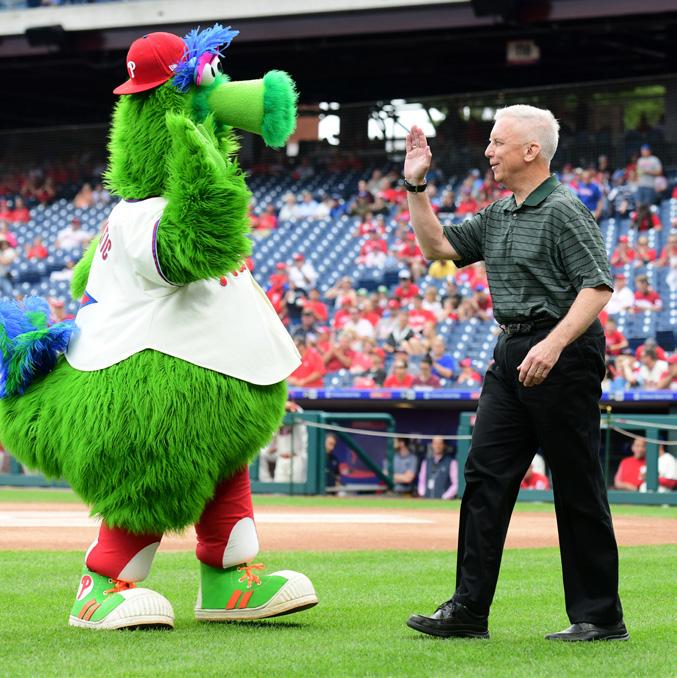
Wade wasn’t with the team at the finish line in Philadelphia. Nor did he manage to stick around long enough in Houston, another long-suffering city where he oversaw a re-engineering that ultimately resulted in a championship team. One of his many significant moves there was plucking Jose Altuve

out of Double A.
That’s the life of a baseball executive who is hired to manage a rebuild. They often don’t get the credit when that rebuild blossoms into a championship, as Wade’s efforts helped to do in both cities.
But Pat Gillick knew that.
As the GM when the Phillies finally climbed to the top of the mountain, Gillick acknowledged that the 2008 Phillies were “Ed Wade’s team”. Wade remembers Gillick’s graciousness fondly and also believes the Phillies were “very, very astute” to hire Gillick.
“I was asleep in my apartment in Houston at the time that the Phillies won the World Series. My phone started to blow up, and it was people basically texting me, ‘Isn’t that great what Pat Gillick just said?’
“I think it validated some of the work that we had done to try to get to that point. So, I’m forever grateful for that.”
Despite not being featured in the championship team photos, Ed Wade has no ill will over how things turned out.
“I’m glad it worked out the way that it did. Some of these things, they move at a pace of their own, no matter how much effort you put into it or how close you think you are.” n
Ed Wade’s career as a general manager is an impres sive one, even if many fans and media in the city didn’t acknowledge it at the time.
But the Phillies always did, and on March 13, 2025, the team put out a press release announcing that Wade would be added to the Phillies Wall of Fame at Citizens Bank Park, alongside life time Philly hero Jimmy Rollins.
Wade told JerseyMan he had no idea the honor was coming, nor did we (we would have asked him about it, of course), but it’s not like his enshrining in Philadelphia sports history should be a surprise.

As the Phillies put it in the press release, “Ed’s contributions to the Phillies were game-changing, as he developed most of our core players from the teams that won five straight NL East championship titles from 2007 to 2011, including the 2008 World Series champions.”
To make the point, the Phillies listed names of players acquired during Wade’s tenure as GM, many of whom are or will likely be similarly honored: Burrell, Madson, Ruiz, Utley, Howard, Hamels, Thome, Millwood, Bell, Wagner and Victorino.
And don’t forget that Wade promoted Jimmy Rollins and hired Charlie Manuel. When you look at it all, it seems like a no-brainer. But it’s nice to see the man get his due, even if Wade’s contribution to the team got a nod from Pat Gillick. So, congratulations Mr. Wade. Well deserved.









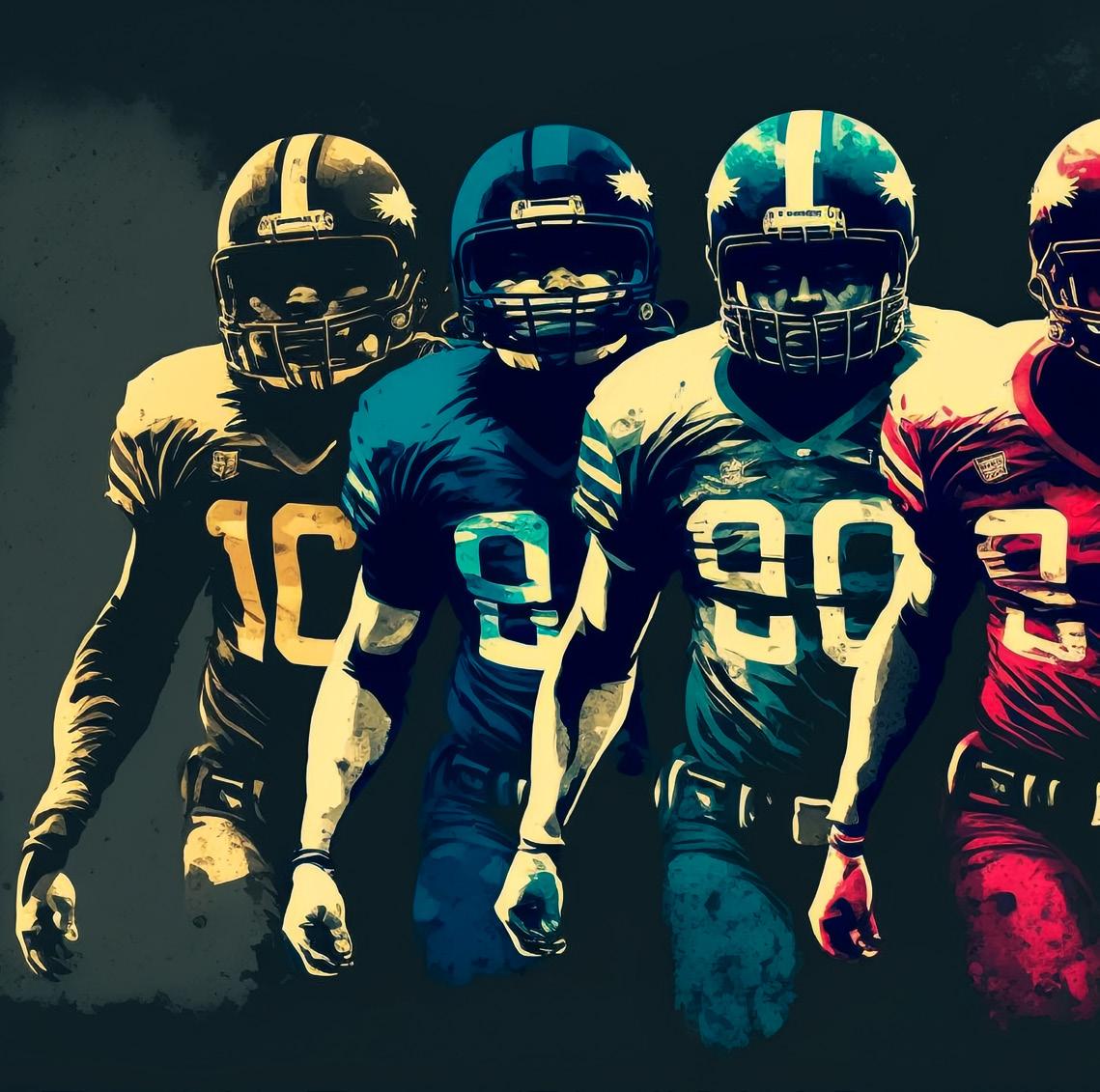
BY MARK ECKEL
Trying to decide who the Eagles are going to select in the 2025 NFL draft is like trying to buy a Christmas present for your rich friend. What do you give the team who has everything?
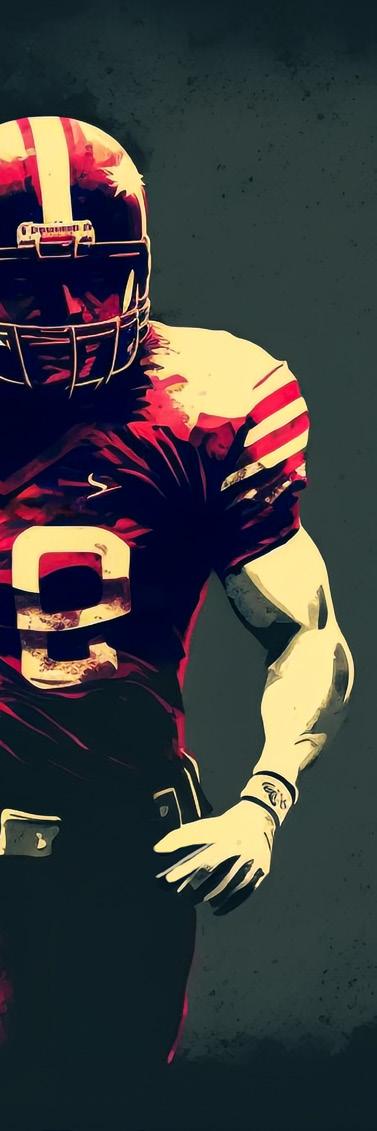
CComing off their Super Bowl triumph and despite some losses in free agency, Nick Sirianni’s team does not have a glaring weakness that it needs to fill with the 32nd pick of the first round. That’s even if they stay at No. 32 come draft night, Thursday, April 24, in Green Bay.
Let’s start with some history. The last, and only other, time the Eagles had the 32nd
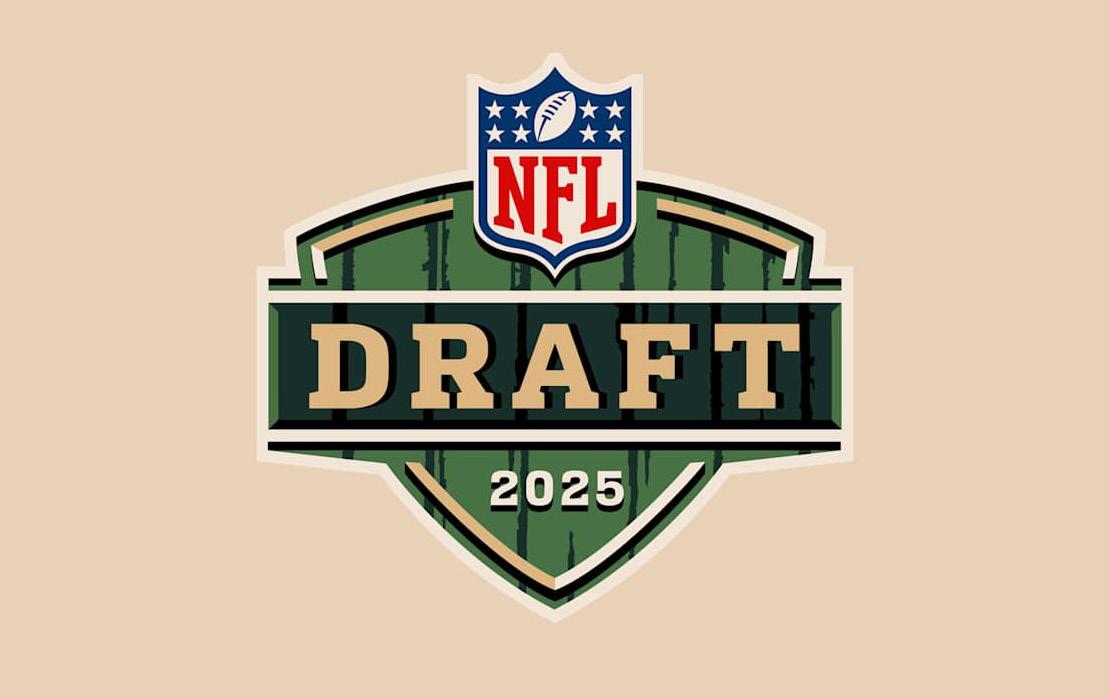
overall pick was in 2018 after their first Super Bowl win. That year they traded out of the first round with the Baltimore Ravens.
Baltimore traded up to select quarterback and two-time MVP Lamar Jackson. The Eagles received the Ravens second-round pick that year (tight end Dallas Goedert) and a second-round pick in 2019 (running back Miles Sanders). The teams also exchanged fourth-round picks.
Something along those same lines could happen again.
In a draft where a lot of scouts think the best value will come on Day Two (rounds two and three), if general manager Howie Roseman isn’t enamored with anyone available at No. 32, he could move back and stockpile some extra picks to add more depth to his roster.
Roseman, because the team doesn’t have as many needs as other teams, could also put together a package of picks or players and make a move up in the draft. He’s certainly shown he’s not afraid to do that. And at times it has worked very well — DeVonta Smith — and at times it has not — Andre Dillard.
As it stands a month before the draft the Eagles have eight total picks — one pick in each of the first four rounds and four picks in the fifth round. The extra fifth-round picks are from Houston and Washington. They do not have a sixth or seventh-round pick.
Should the Eagles stay at No. 32 there are a few positions they could target. The three
that readily come to mind are offensive line, defensive line and edge rusher.
The offensive line has been an Eagles strength through their playoff and Super Bowl years. And a team that once regularly drafted linemen in the first round has taken just two in the past dozen years, the aforementioned Dillard in 2019 and Lane Johnson in 2013.
Speaking of Johnson, while he says retirement isn’t in his current plans he will be 35 in May. In what is a deep tackle draft, Johnson’s eventual replacement might be had at No. 32.
The defensive line is a position the Eagles have taken more than any other in the first round this century (10), so taking one again this year would not surprise anyone who has followed the team.
If, as expected, Josh Sweat and Brandon Graham are not on the 2025 roster, another edge rusher to join Nolan Smith, Jalyx Hunt and the disappointing Bryce Huff would also make sense.
Here is a look at five players who could be there if, and when, the Eagles are on the clock at No. 32.
Josh Connerly, T, Oregon — In other drafts a talent such as the 6-5, 315-pound Connerly wouldn’t have a chance to make it to the Eagles pick. And he may not this year. But there are an abundance of good tackles, and he may be the one to fall. Connerly had an outstanding past two seasons for the Ducks,
who went undefeated during the 2024 regular season. In those two years at left tackle, he allowed just one sack.
Mykel Williams, Edge, Georgia — Yes, another Georgia player to the Eagles. Roseman has grown fond of the Bulldogs and has gotten results from Jalen Carter, Jordan Davis and Nolan Smith, all first-round picks from Kirby Smart’s program. Williams, 6-5, 265, could be another one to go from Athens to Philadelphia. Viewed as a boom or bust type of player — some scouts think because of his quickness off the edge he can make an immediate impact, while others point out his lack of production as a detriment. Williams might be a good fit for coordinator Vic Fangio, who
may coach him to his immense potential.
Alfred Collins, DT, Texas — Everything is bigger in Texas and Collins at 6-6, 330, is proof of that old saying. An accomplished run stuffer and an All-Academic selection the big Longhorn could fit in nicely next to Carter and Davis on the Eagles’ defensive line. There are some limitations in his game as a pass rusher, which is why he may still be available at No. 32.
Tyler Booker, G, Alabama — Roseman has also done well with Alabama products recently and the 6-5, 321-pound Booker could be another. Perhaps either the best or secondbest interior lineman (Ohio State’s Donovan
Jackson is the other), Booker is considered a mauler in the run game, but also possesses the finesse to be an excellent pass protector as well.
Colston Loveland, TE, Michigan — This pick would likely require moving up, but if it doesn’t take too big of a move Roseman might do it. Tight end Dallas Goedert enters the final year of his contract next season, and it will be interesting to see if the team wants to give him a third contract at age 31 and with some injury history. Loveland, who set a Michigan record for tight end with 56 receptions during the Wolverines championship season in 2023, would be an ideal replacement. n
With the help of a long-time executive in personnel who owns two Super Bowl rings, here is a position-by-position look.
Quarterback: Cam Ward, Miami — This isn’t even close in what is a down year for the position. Ward will be one of the top three picks in the draft after a stellar career at The U. “He has all the physical tools you want. And he’s gotten better as a player. He’s shown a lot of poise from a year ago.”
Running Back: Ashton Jeanty, Boise State — The running back is back. After what Saquon Barkley did for the Eagles in 2024. And not to mention Derrick Henry (Baltimore) and Josh Jacobs (Green Bay), the devalue days may be over. Jeanty is a certain first-round pick. And a few others could join him.
Wide Receiver: Tetairoa McMillan, Arizona — In what he called the “worst group of receivers he’s seen in a long time” the personnel executive pointed out that McMillan “was legit as a first-round talent.” Others will go first round but are not in McMillan’s league.
Tight End: Tyler Warren, Penn State — There are a lot of good tight ends in this class, but Warren stands out as “the most complete.” LSU’s Mason Taylor and Michigan’s Colston Loveland are also very good.
Tackle: Will Campbell, LSU — In another deep group Campbell is “the best player” according to the executive. But Ohio State’s Josh Simmons, coming off a knee injury, might be the most talented.
Guard/Center: Donovan Jackson, Ohio State — Jackson, who played tackle for the Buckeyes, but will be a guard at the NFL level, got the slight nod over Alabama’s Tyler Brooks.
Edge Rusher: Abdul Carter, Penn State — The Philadelphia native and LaSalle High School product will be a top-three pick and could be No. 1 overall. “Yeah, he’s that good,” the executive said.
Defensive Tackle: Mason Graham, Michigan — In what the executive termed “an overrated group,” Graham stands out as the best. “He’s good. He’ll be a good player for a lot of years.”
Linebacker: Jihaad Campbell, Alabama — The executive called Campbell his favorite player in the draft. “He can do it all, rush, cover, he’s all over the field.”
Cornerback: Travis Hunter, Colorado — The Heisman Trophy winner, who is also a star wide receiver, joins Ward and Carter as a top-three pick. We’ll know in what order soon enough. He’s the best of a very good group of corners that could see as many as seven go in the first round.
Safety: Xavier Watts, Notre Dame — “He knows how to play the game,” the executive said of the Fighting Irish D-back. “(He) has great instincts.” South Carolina’s Nick Emmanwori and Georgia’s Malaki Starks will be high picks as well.


isn’t dependent on any single factor—especially in today’s complex, ever-evolving financial landscape. Instead, it involves a number of considerations. Let’s discuss several of these as they relate to the markets in 2025.
Many market observers think the markets are currently overvalued. That’s based on several key valuation metrics, such as price-to-earnings ratio, price-to-book ratio, price-to-sales ratio and forward multiples, among other indicators. In particular, the equity risk premium—which measures the compensation investors will receive in stocks relative to the risk-free rate—was recently negative. (It’s historically been about 6%.) This highlights that investors aren’t being adequately compensated for the risk they’re taking when buying stocks and that evaluations are extremely high.
The prices you pay for stocks matter—now and always. For example, let’s look at the tech bubble that occurred around the beginning of the century. Five of the biggest 10 companies in 2000 are currently trading at or below their price that year1,2. And it’s not necessarily because these businesses have floundered. Instead, it’s because they were so overvalued back then. As an investor, it’s not enough to own stock in a great business. You need to own it at the right price.
You should also be mindful of the overall market environment when investing. While the stock market’s performance over the past couple of years on the surface is impressive, it’s been a narrow rally. Seven companies have accounted for about 33% of the gains experienced by the S&P 500 index. If you’ve owned any of the other 493 companies, your returns likely are more muted. And if you remove those stocks from the index, the overall rate of return looks
BY ALBERT FOX
worse and the price-to-earnings remains high, although not as elevated. The only other times we’ve seen such a narrow market was during the tech bubble, the Great Depression, and the late ‘60s/early 70s.
Remember, time is generally your ally as an investor. Trying to be a “market timer”—someone who guesses at when a market bottom or top will occur and acts accordingly with their money—isn’t a sound strategy for the long term. There are two decisions about markets: when to enter and when to exit. And it’s rare to get both exactly right. That’s why a study performed years ago revealed the average return of individuals invested in mutual funds grossly underperformed the actual average return of those mutual funds3. It was due to individuals
being market-timers. This underscores the importance of being patient, and leveraging the value of time.
As an investor, when you glance at your monthly or quarterly statements and see a solid portfolio performance you may assume everything is fine. But it’s essential to not only understand what you own, but why your holdings are doing well. It could be you’ve chosen a smart mix of quality investments. It could also mean you’re over-leveraged with too many of your assets concentrated in too few investments that just happen to be performing well at the moment. And perhaps next year your returns will be down 30%.
TAKING THIS COMPLACENT, set-itand-forget-it approach to investing is dangerous. And yet we see this behavior all the time, especially in markets like this. It’s easy to overlook that environments constantly change—whether they’re related to the economy, politics, taxes, corporations, regulations, market cycles, valuations and other factors. Proper risk management means you should pay attention to what’s occurring within the macro and micro outlooks that can impact the market—and your portfolio performance. That doesn’t mean you must read the financial news every day. But it’s a good idea to keep up to date about what’s happening both nationally and globally that could affect your portfolio and the decisions you make about it. Understanding the history of the markets can also be advantageous. Among other benefits, it provides you with the perspective that cycles repeat. The details of a cycle may be different, but they still repeat. Knowing this may make it easier to ignore market observers who claim “this time will be different.” We heard this sentiment frequently during the tech bubble, when the advances in productivity that companies were expected to gain were used to justify the historically high valuations being paid for these businesses. Except that never happened. We’re seeing a similar renaissance of this sentiment now with AI. Although this technology may be transformative, you shouldn’t lose sight of the valuations you’re paying for its projected
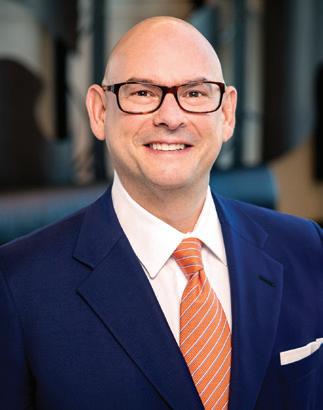
benefits. Again, cycles repeat.
Additionally, being aware of market history can help guide you about how to react prudently in different types of market cycles, such as during periods of elevated inflation or high interest rates. They provide a possible road map to follow.
time is generally your ally as an investor.
You may know that markets hate uncertainty. And, unfortunately, there’s uncertainty everywhere at the moment—from the future of interest rates to the potential actions of a new administration to conflicting economic data to whether a “soft landing” or a recession will occur. For instance, as of late February, many are concerned about tariffs being imposed by the current administration. But there’s uncertainty even within this worry. Broad tariffs tend to be inflationary, while narrow tariffs typically have
little inflationary impact. At this point, we simply don’t know what’s going to happen with the tariff situation.
Meanwhile, advocates of the soft-landing scenario believe that inflation will be defeated, and the economy will remain strong enough for earnings to justify their high price-to-earnings ratio. In other words, we’ll experience growth without inflation. These individuals feel emboldened by the series of interest rate hikes from the Federal Reserve over the past few years which have achieved the intended effect of reducing inflation. Plus, the economy remains relatively resilient.
However, others feel the most likely outcome of this cycle will be a recession. That’s based on historical market patterns, as well as troubling economic data. While price pressures have dropped, inflation remains sticky and will likely last longer than anticipated. As evidence of this, the consumer price index and personal consumption expenditures price index (the Fed’s preferred measure of inflation) recently both rose again. While the rate reduction cycle has begun, keep in mind the Fed can’t control every aspect of the economy, including the cost of food, energy, housing, healthcare and insurance. And in regards to history, most interest rate hike cycles have been followed by a recession.
We hope that won’t happen. But hope isn’t a good investment strategy. With this much uncertainty in the markets, it’s more important than ever to stay patient, understand your risk tolerances and take deliberate, measured actions. Perhaps consider investing in equity markets using a highly diversified approach with dividend-paying companies along with select growth stocks all trading at reasonable valuations. (Remember, prices still matter.)
In closing, no matter your preferred strategy, make sure you follow it consistently, reevaluate it constantly and look at it objectively. It’s all part of becoming a better investor. n
Sources
1. Fortune Global 500 | Fortune
2. The Biggest Companies in the US by Revenue Each Year Since 1955—What Entrepreneurs Can Learn
3. Why Fund Returns Are Lower Than You Might Think | Morningstar
Albert Fox is a Financial Advisor in Morgan Stanley’s Mount Laurel, NJ office. Although Albert has compensated JerseyMan to have this advertisement featured in its publications, this is not a solicitation nor intended to provide individually tailored investment advice. The strategies and/or investments referenced may not be suitable for all investors. You should consult their tax advisor for matters involving taxation and tax planning and their attorney for matters involving trust and estate planning and other legal matters.
The views expressed herein are those of the author and may not necessarily reflect the views of Morgan Stanley Smith Barney LLC. Member SIPC. All opinions are subject to change without no-tice. Neither the information provided, nor any opinion expressed constitutes a solicitation for the purchase or sale of any security. Past performance is no guarantee of future results. Indices are unmanaged. An investor cannot invest directly in an index. For index, indicator and survey definitions referenced in this report please visit the following: https://www. morganstanley.com/wealth-investmentsolutions/wmir-definitions
Diversification does not guarantee a profit or protect against loss in a declining financial market.
Information contained herein has been obtained from sources considered to be reliable, but we do not guarantee their accuracy or completeness. CRC 4266211 2/25


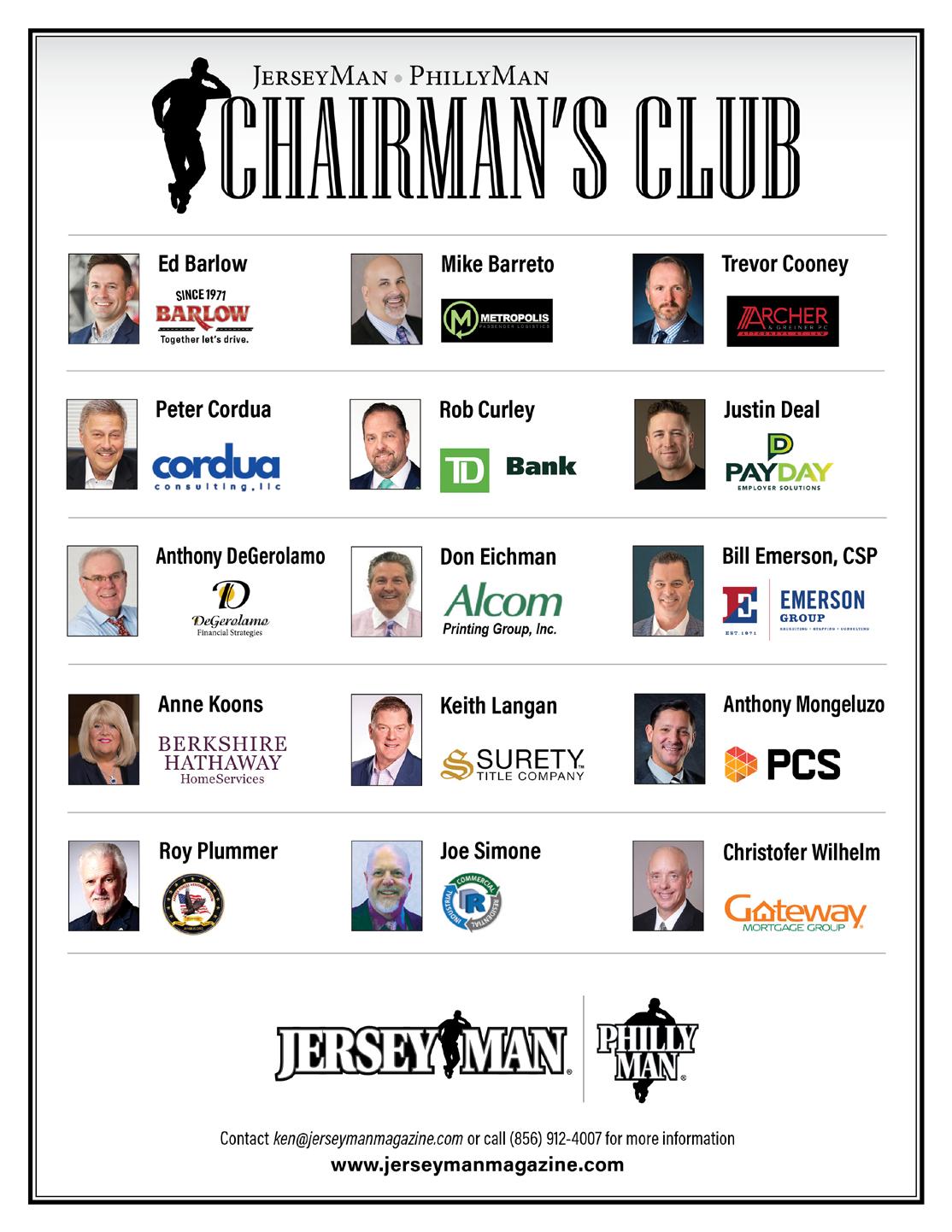
We are proud to introduce you to our private business network
H Do you want to expand your network in
H Do you want to create powerful connections with other business professionals in the area?
H Do you want to attend exclusive networking events twice per month at local venues?

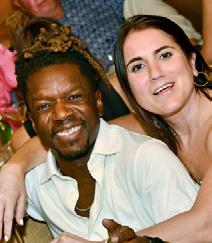
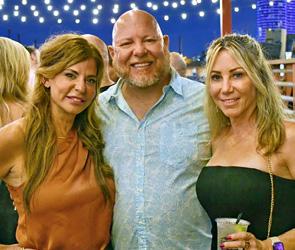

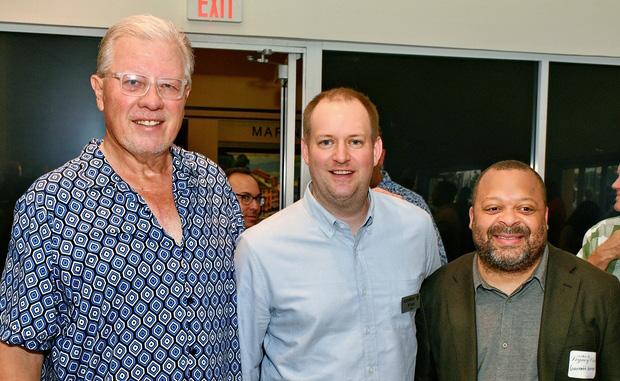
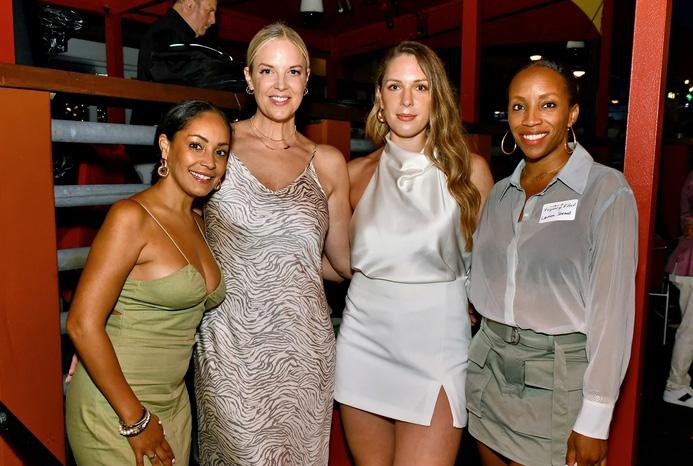

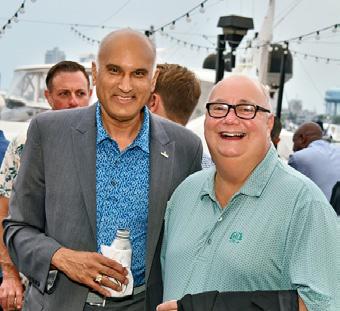
Ken Dunek New Opportunity Publishing
Doug Easlick Graham Company
Donald Eichman Alcom Printing Group
Bill Emerson Emerson Group
Will Emerson Emerson Group
Ryan Esposito Constellation Brands
Bill Evans Liberty Fox Technologies
Angela Fagnani Axis Construction Management
Allison Farcus AssuredPartners
Gary Farnesi WSFS Bank
Mark Fisher Fisher Financial Management
Jerry Flanagan JDog Brands
Sean Flanagan Always A Good Sign
Stephen Flanagan JDog Carpet Cleaning
Steve Foreman Financial Business Systems, Inc.
Corinne Franceschina Jaws Youth Playbook
Rachel Frkovich Workplace HCM, Inc.
Mike Fuller Maggianos
Joe Gangemi Suite Recording
Denise Gardner DeGerolamo Financial Strategies
Tom Gee Palo Alto Networks
Robert Gelsher Janney Montgomery Scott LLC
Julia George Combined Insurance
Damien Ghee TD Bank
Jim Gibson Alcom Printing
Dave Gill Haefele, Flanagan & Co., P.C.
Robert Glycenfer Financial Guide
Mark Godofsky Surety Title Company
Michelle Gollapalli Food For The Poor
Steve Goodman Greater Philadelphia YMCA
John Gordy Blue Hen Capital
Gary Greco Scientia Consulting LLC
Liz Green Richard Green & Son Public Adjusters
Jen Groover Thuzio
Dr. Thanuja Hamilton Advocare Sleep Physicians of South Jersey
Steve Hanscom McCann Commercial Real Estate & KW Commercial
Berkley Harmon Insperity
Joe Hassan MPI Valuation & Advisory
Pete Hatton Hutchison Mechanical Services
John Herring LINKBANK
Gary Herviou A Neumann & Associates, LLC
Robert Hoey Janney Montgomery Scott
Robert Hoey, Jr Janney Montgomery Scott
Kirstie Holmes Pegasus Financial Planning
Michael Holt Holt, McNally & Associates
Hope Feldscher Horwitz Feldscher Horwitz Public Relations
Cheryl Houtz The Benefit Doctor
Nichole Howard Nichole MCH Photography
Kristi Howell Burlington County Chamber of Commerce
Stephen Hruby, Jr Patriot Landscaping Services
Edward Hutchinson Hutchinson Mechanical Services
Katie Interrante Apex Commercial Capital
Tim Irons T.C. Irons Insurance
Mike Jaconelli Tam Lending
Ron Jaworski Ron Jaworski Golf
Timothy Jennings Telecorp
Chris Jerjian Kiwi Offices
Keith Johnson Laurel Lanes
Jessica Jones Simplifi Payroll & HR
Kenneth Justice KMJ INC.
Niki Kahn Drybar Mount Laurel & Drybar Marlton
Corey Katzen Nirvana
Keith Keller SpeedPro South Jersey rescinds
Lisa Kelly Foundation Title
Bob Kennedy Insperity*
Robert Kennedy The Kennedy Companies
Erica Kirk Vantage Financial LLC*
Damon Kline Remington & Vernick Engineers
“One of my favorite things about JerseyMan is that it’s so much more than a networking organization. It has become a family of high energy go-givers that truly look out for each other on a business & personal level. I’m very grateful to be involved with this group that always has the best attendees at the best venues. When it comes to networking, no one does it quite like Ken Dunek.”
– Christine Blithe, ARS Truck & Fleet Service

George Koch SoundPlex
Anne Koons BHHS Fox & Roach, NJ/PA & Vineland Construction Co.
David Kryszczak Spartan Digital Solutions
Edward Labman Univest
Joe LaGrossa Intellicor
David Lance Pristinex
Keith Langan Surety Title Company
Arthur Leiby Lerepco IT Group
Andrew Lesser New York Life
Bryan Levens SNEVEL Technologies, LLC
Brian Libby Primepoint
Ronald Lieberman Rigden Lieberman LLC
Robert Lipinkski Cherry Hill Cigar Club
Jason Litman Capstone Search Advisors
John Lorenzo TwoTwo Creative
Doug Lotierzo The Lotierzo Group
Eric Lottes DelVal Techs
Eric Lynn Northbound Strategies
Joey Mac Dizon The Mobile Cigar Lounge
Chris Maciborski Weisman Children’s Hospital & Voorhees Pediatric Facility
Anton Makharynets ANTVAL Rentals
Joseph Mancini TriState Engineering & Surveying
Jason Mancivalano JP Morgan Private Bank
Tom Matera AnnieMac Home Mortgage
Betty Maul FrontEnd Graphics
Matthew McDevitt Positive Wiring
Ty McGilberry Pegasus Financial Planning
Steven McKeon MacguyverTech
Candy McMullen C&S Workforce Consulting Group
Anita Meeks Allure Payments
Carson Merine Keller Williams Realty
Frank Messina AllRisk Property Damage Experts
Jeremy Messler Jeremy Messler Photography, LLC
Marla Meyers Legacy Treatment Services Foundation
Brian Minker Able Technology Partners, LLC
Anthony Minniti Camden Apothecary Dispensary at Bell Pharmacy
Justin Mirigliani Checkmates Charitable Association
Samir Mody Keller Engineers of New Jersey*
Rachel Monaghan Metatron Marketing, Inc.
Anthony Mongeluzo PCS
Ron Monokian We Make It Personal by Joy’s Hallmark
Dan Morroni Morroni Custom Clothiers
Steve Mullen Insperity
Peter Musumeci TD Bank
Rick Nelson EOS - Advance to Vision LLC
Dan Ninerell Modern Classical Chefs
Joe O’Donnell Fulton Bank N.A.
Joseph Ohlweiler JTO Advisors & TAB SNJ
Marc Oppenheimer Parx Casino
Amy Osborn New Jersey Vietnam Veterans Memorial Foundation
Colette Oswald Colette Oswald Photography
Michael Ott At Home Technology
Richard A. Palko Closet Factory
Rae Pastore Durand, Inc
Deep Patel GenRise Wealth Advisors, LLC
Tom Pellegrino Everest Discovery LLC
Lee Perlman Law Offices of Lee M. Perlman
Mike Perlow Perlow Productions
Genell Peterson Garcierge
Jaime Picozzi Raves & Referrals*
Frank Plum Workplace HMC Inc.
Roy Plummer Armed Forces Heritage Museum
Mike Poalise PeopleShare
Steve Pontrello Barlow Work Trucks
Casey Price Price & Price, LLC
Andy Pritikin Liberty Lake Day Camp & Special Events
Eileen Propp Prime IV Hydration and Wellness
Steven Quagliero Vantage Labs
Geoff Rabinowitz New Balance
Soleiman Raie Lento Law Group
Matt Rakus Paparone Insurance
Lisa Regina A Write to Heal, Inc.
Ryan Regina Big Sky Enterprises, LLC
Robert Richardson Allied Document Solutions and Services, Inc
Mike Rosiak Weisman Children’s Hospital & Voorhees Pediatric Facility
Seth D. Rotman Clarify Wellness LLC
Andrew Ruhland National HR
Helana Russo Empire Counseling Services
KJ Sachs Lamb Realty
Jawad H. Salah Archer & Greiner, P.C.
Robert Salotto First Financial Lending
Michelle Sapp Arhaus*

JP Sawyer The Alias Group
Al Schuster Polaris Brand Promotions
Sergio Scuteri Capehart Scatchard, P.A.
Jeremy Shackleford WSFS Bank
Haley Shapiro Eddie V’s Prime Seafood
Hala Shawaf-Barson VoIP Doctors Business Telecommunications
Lee Shields Marcum
Jennifer Sherlock Jenna Communications, LLC
Dr. Joel Shertok Process Industries Consultants
Gary Shickora Northwestern Mutual
Joe Silva HBK CPA’s & Consultants*
Jerry Silvi Cornerstone Bank
Joe Simone Regional Resources Energy Group
Josh Smargiassi Boomerang
Chris Smith Micro Integration Services, Inc.*
Ralph Smith Capehart Scatchard
Michael Snyder Spark Creative Group
Brett Soper TBT Barter
William St. Clair Firsttrust Financial Resources
Richard B. St. Maur III Coordinated Project Solutions, LLC
Jeffrey Steigerwalt Mid Penn Bank
Robert Sullivan Schooley Mitchell*
Scott Tanker Tanker Consulting Services
Dr. Keisha Taylor Dr. Keisha Stephenson Taylor Consulting Services, LLC
Thomas Taylor Repice and Taylor, Inc.
Brooke Tidswell Farm Truck Brewing
Christopher Toppi Compass Wire Cloth Corp.
Manuel Torres Insperity
Kenneth Toscano New York Life Insurance Company
Joseph Tredinnick Fulton Bank
Melissa Triester LegalShield
Tracie Ullman SoulScapes Medical SPA & KT Aesthetic Academy
Les Vail Workplace HCM, Inc.
Danny Valentino ProShares
Emory Vandiver Interactive Security
Joseph Velez 3D Voice & Data
Angela Venti Alloy Silverstein
Michael Vitarelli Jessco Construction, Inc.
Josef Vongsavanh Center City Photo
Scott Walker The Growth Coach of Greater Philadelphia
Danielle Wasniewski Blue Moon Estate Sales
Bill Webb Saratoga Benefit Services
Kelly Wernersbach Adjust Your Sleep Mattress Boutique
Phil Wessner Fulton Bank
Jaime Whalen Truist
John Wilchek, Jr John Wilchek Photography
Christofer Wilhelm Gateway Mortgage
Ashleigh Wilson CLM Advisors*
Pamela Wilson Bank of America
Jason Wolf Wolf Commercial Real Estate
Nicholas Yodock Archer & Greiner, P.C.
Jim Ziereis Golden Nugget Atlantic City
Jack Zoblin Jacy Technology Advisors, LLC

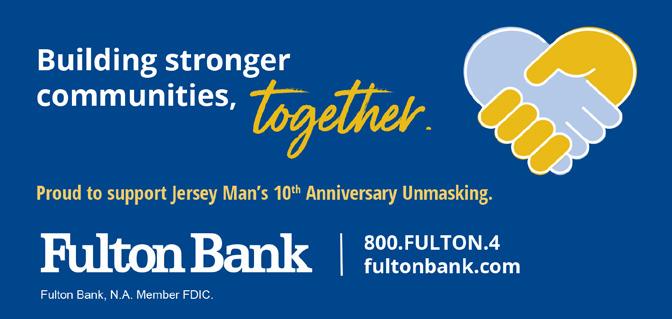
















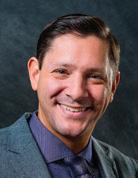
BY ANTHONY MONGELUZO
Have any tech ideas you want to talk about? Feel free to reach out to me on Twitter (@PCS_AnthonyM) or email me any time at Anthony@helpmepcs.com.
IT IS 2025 and the AI scene is hotter than ever. If you’re wondering which platforms are worth your time this year, I’ve got the top five that’ll turbocharge your tech game—whether you’re podcasting, editing pics, or just geeking out. Let’s dive in, starting with the MVP!
No surprise here—Grok 3 from xAI is my numero uno. This isn’t just some run-of-the-mill AI; it’s like having a tech-savvy buddy who’s always got your back. Built by the xAI crew (those brainiacs pushing human discovery), Grok 3 is topping charts with its slick voice mode and crazy-smart predictions—Oscars, anyone? It’s perfect for brainstorming, troubleshooting, or just chatting tech. Trust me – this is my go-to platform.
You can’t skip OpenAI when talking AI. GPT-4.5 is their latest slugger, churning out text so smooth you’d swear it’s human. Need emails, blog posts, or that novel you’ve been dodging? This is your guy. It’s a beast for complex tasks, and OpenAI keeps it fresh with updates. If you’re running a business or flexing your creative muscles, this one’s a no-brainer. If Grok didn’t have such a dramatic update, this would be my #1.
Claude 3.7 Sonnet from Anthropic has got a vibe I love—smart, safe, and straight-up trustworthy. Built by ex-OpenAI stars, it’s a convo
champ for coding, research, or just kicking ideas around. The kicker? It’s big on privacy, so your secrets stay safe. If you want an AI that’s sharp and ethical.
Switching gears—let’s talk pics! PhotoDirector is my go-to AI for photo editing in 2025. This gem blends pro-level tools with a newbie-friendly setup. Think one-click fixes, generative backgrounds from text, or slick object removal. It’s got portrait tricks like wrinkle-zapping and body shaping, plus wild AI cartoon effects. Whether you’re sprucing up podcast art or family shots, PhotoDirector has got the magic touch..
Rounding it out, Google NotebookLM is your ticket to podcast gold. This AI’s a wizard at turning text—docs, notes, whatever—into polished audio episodes. Feed it your ideas, and it’ll summarize, script, and spit out a podcast-ready file. Pair it with a text-to-speech tool, and boom—you’ve got a show without breaking a sweat. It’s perfect for research-heavy eps or quick audio sketches. Podcasters, this one’s a game-changer!.
There are my top five AI platforms for 2025—Grok 3’s leading the charge, but they’ve all got their shine. What’s lighting up your tech radar? Drop me a line—let’s keep the convo rolling and make this year a tech blast! Feel free to reach out on X @PCS_AnthonyM or e-mail me @ Anthony@helpmepcs.com. n


